The next day I went on an excursion with the group that I was a part of during this holiday. To start with, we left by a mini-bus from Stone Town, the historic part of Zanzibar City, the capital of the island of Unguja that belongs to the archipelago of Zanzibar, to Kizimkazi beach. This was all, obviously, taking place in Tanzania where Zanzibar has the status of a semi-autonomous province.
The island of Unguja is about 85 km long and about 30 km wide, but the road from Stone Town, which is about halfway along the west coast of the island, to Kizimkazi, which is almost in the south, is about 60 km. The reason for this apparent illogicality lies in the fact that the length and width of the island are measured as straight lines, while the road naturally curves.
Kizimkazi is a small fishing village in the south of the island of Unguja, but in recent years, coming to its beach has become a big deal in the field of tourism. Namely, boat trips to the open sea, where dolphins regularly stay, start from there and this creates the possibility for visitors to “swim with dolphins.” This is how the trip is advertised.
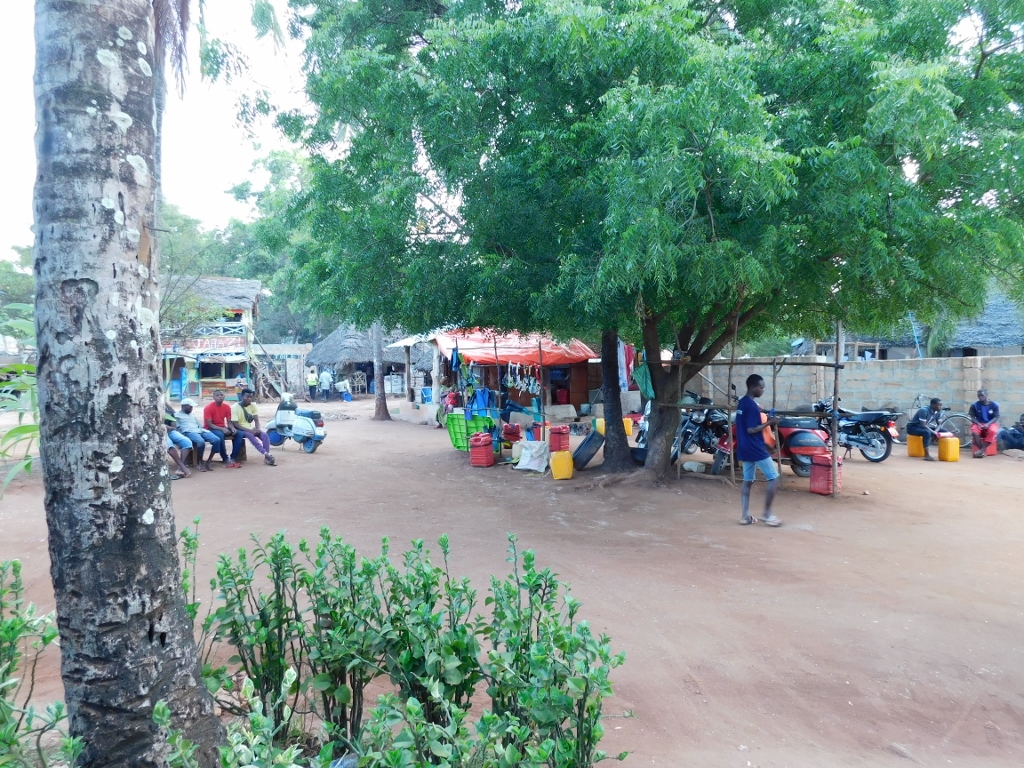 Part of the village of Kizimkazi near the beach
Part of the village of Kizimkazi near the beach
 Kizimkazi beach
Kizimkazi beach
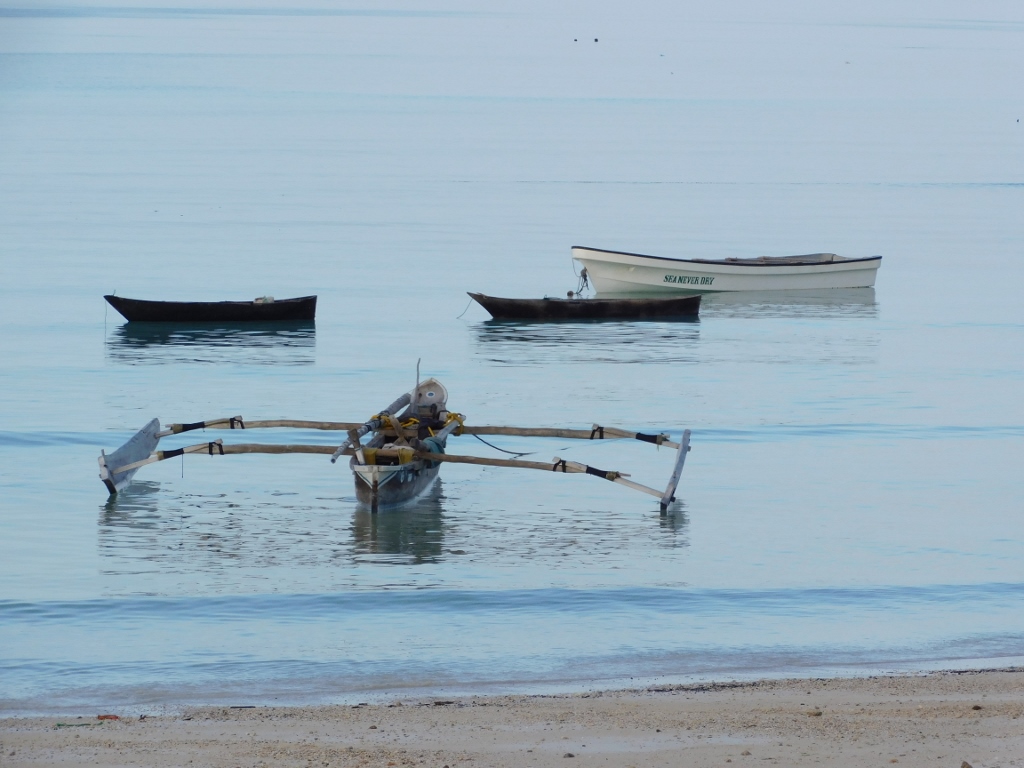 Kizimkazi beach
Kizimkazi beach
Here we got snorkel masks and fins, at least those who wanted to try their hand at hanging out with dolphins. While I was waiting for everyone from the group to get organised, I observed and took pictures of some events on the beach. Some of the local fishermen had returned from work and were now organising their catch, while a local cat was calmly waiting to see the developments.
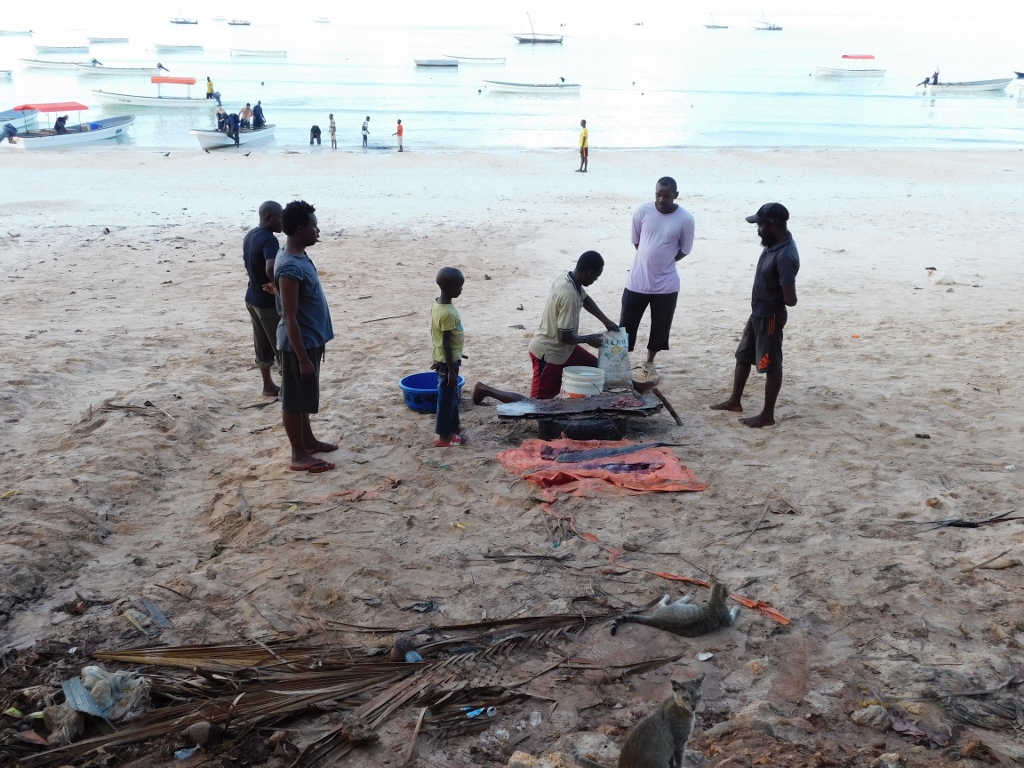 Kizimkazi beach
Kizimkazi beach
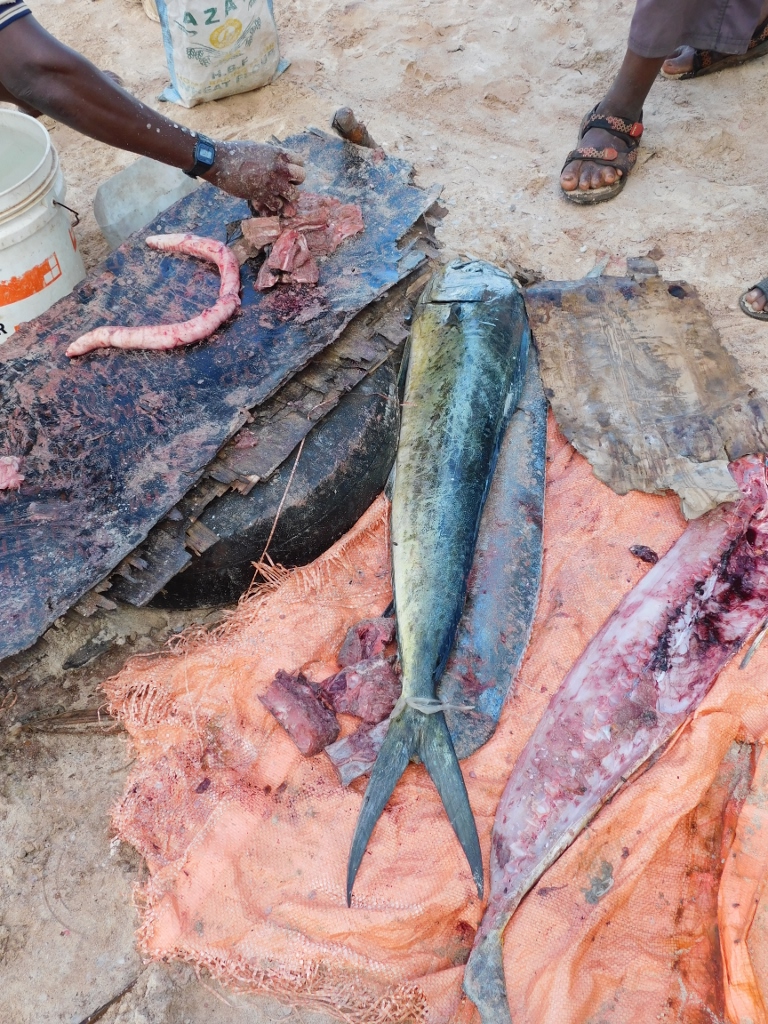 Kizimkazi beach, a detail
Kizimkazi beach, a detail
Then the group split up, we all boarded two boats and set off. The water was incredibly calm.
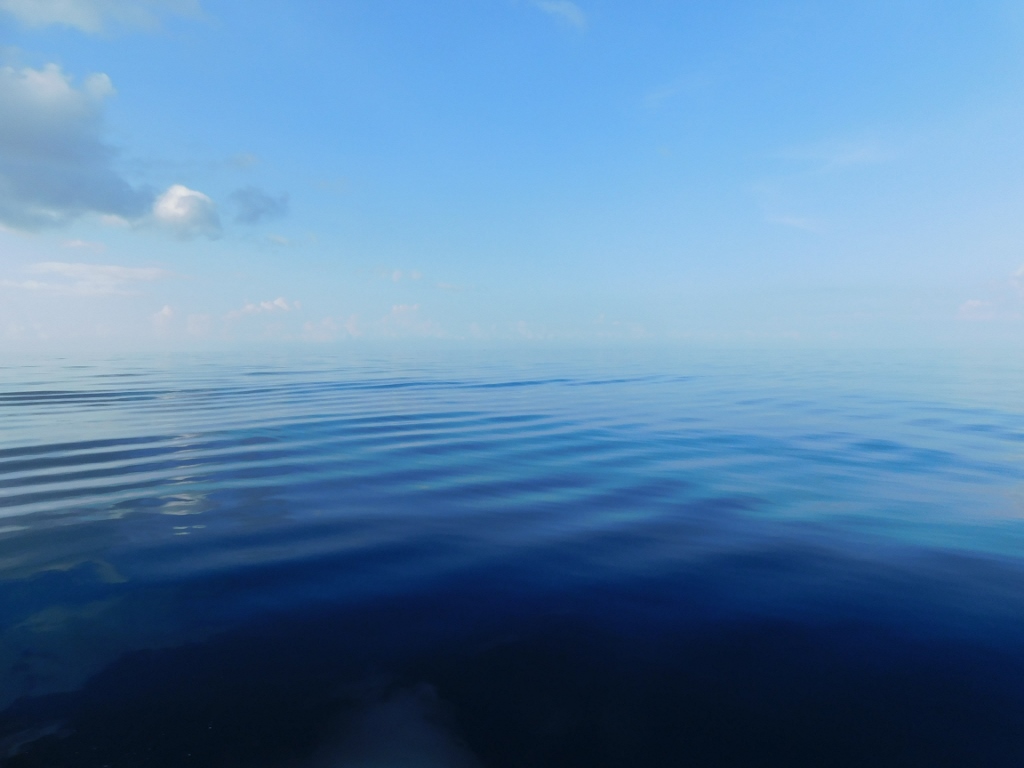 Ocean close to Kizimkazi beach
Ocean close to Kizimkazi beach
As we made our way to a place that the guys driving the boat obviously knew well, we also had a couple of interesting encounters. One was about a couple of guys in a traditional boat and the other was about a bridled tern (Onychoprion anaethetus). As for the first picture, you should pay attention to the clothes of these young men. I don’t know when they went to the open sea and what the weather was like at that time, but all of us, the visitors, were in bathing suits and possibly T-shirts with short sleeves and we were quite comfortable.
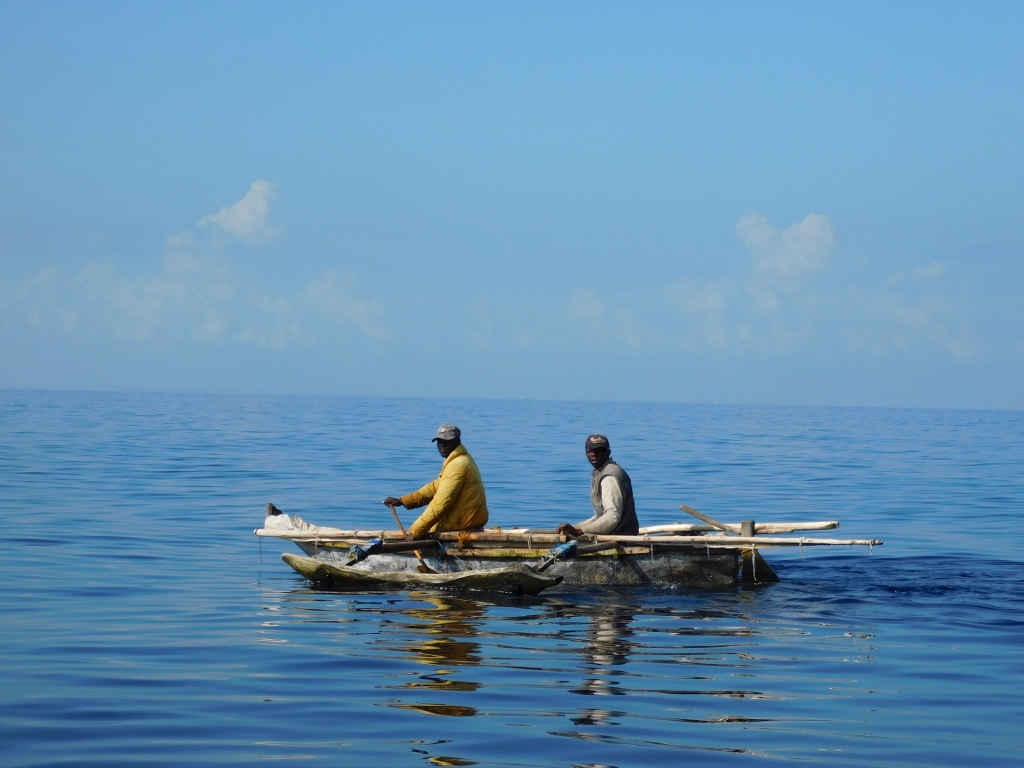 Guys in a traditional boat
Guys in a traditional boat
And as for the bridled tern, it first stood on some kind of branch floating on the surface of the water and just as I zoomed in on it, it decided to fly. Hence the next picture.
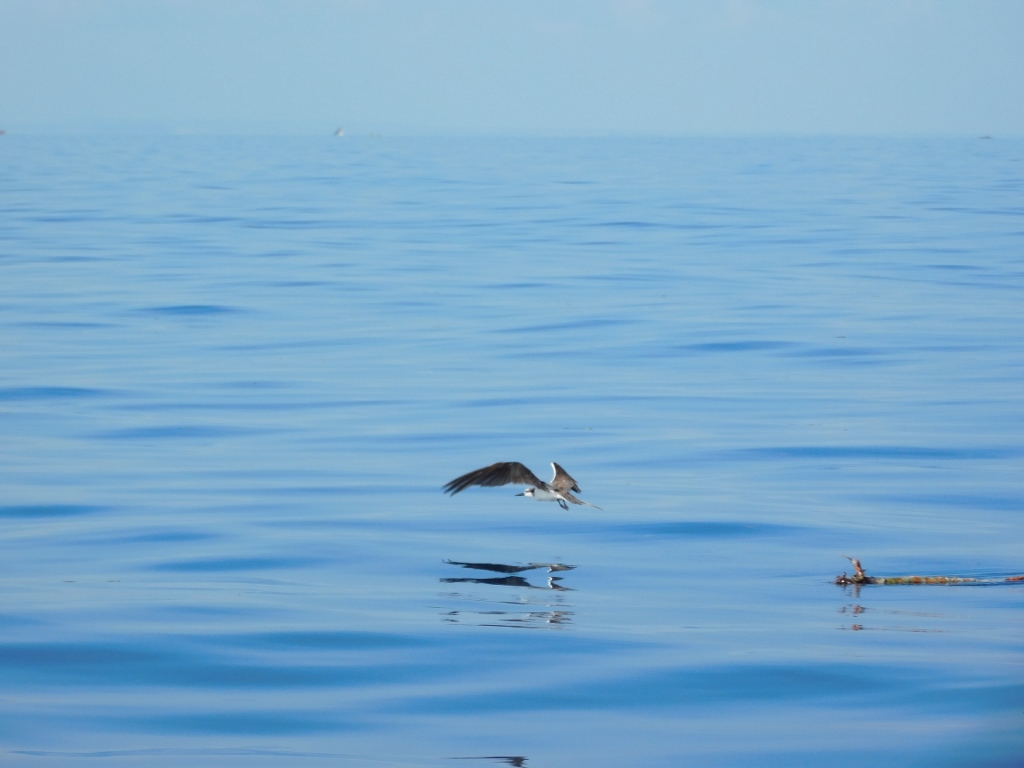 Bridled tern
Bridled tern
We still had to ride boats for a short while and after some time we saw dolphins.
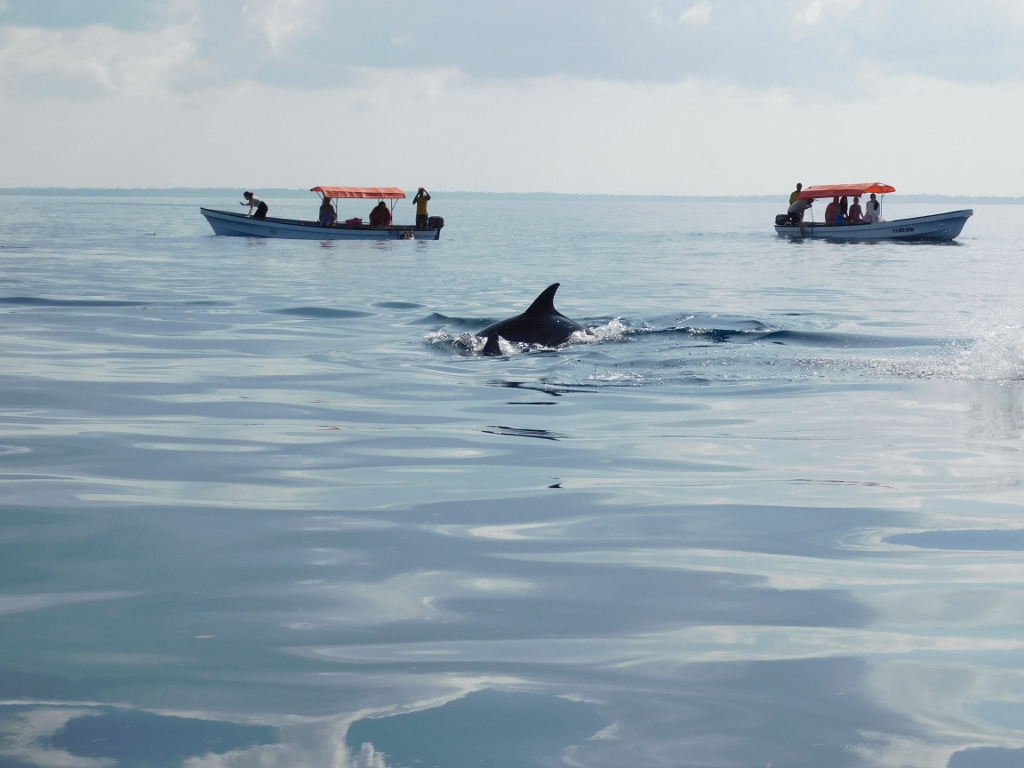 Dolphins close to Kizimkazi beach
Dolphins close to Kizimkazi beach
The boat I was in stopped near the dolphins and a couple of us who wanted to jumped into the water. Before I jumped in I saw in which direction the dolphins were moving, but of course they didn’t even think of standing there waiting for us humans, they just continued on their way, so I didn’t see anything while I was in the water .
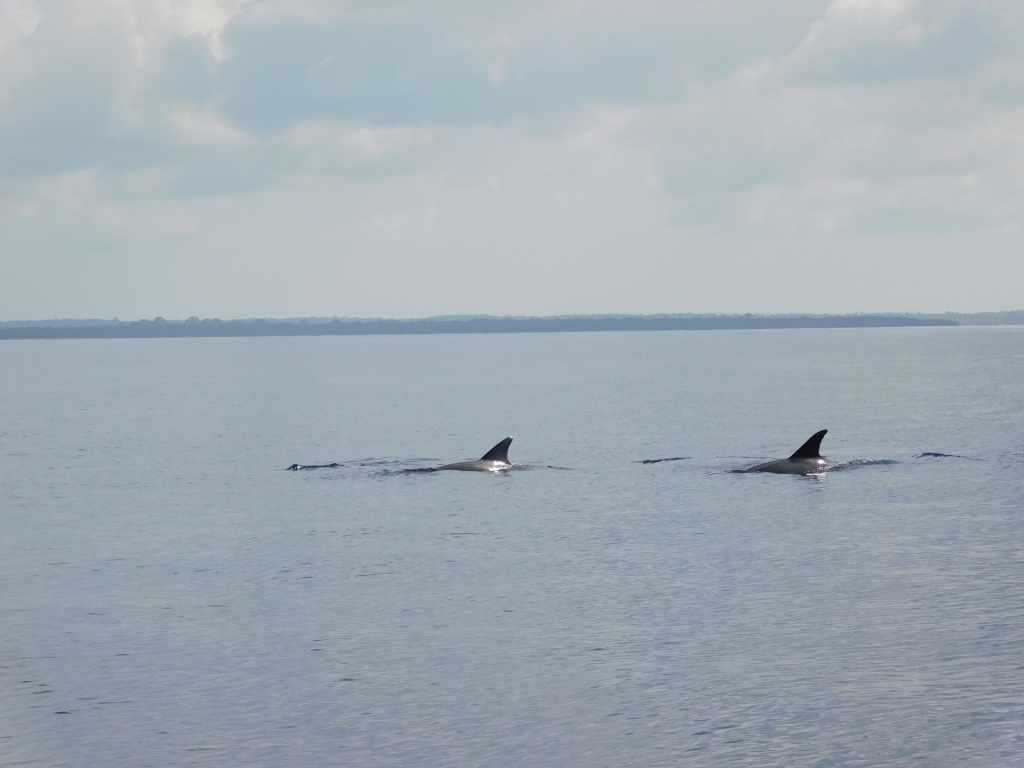 Dolphins close to Kizimkazi beach
Dolphins close to Kizimkazi beach
The jumping into the water was easy for me and I really enjoyed it. The water was wonderful, warm, clean and blue. I absolutely loved the water itself and swimming in it. However, we had to return to the boat in order to move on and try to “catch up” with the dolphins in another place. Well, now... The climbing into the boat wasn’t as easy for me as jumping in. They had a small metal ladder on the boat, but I didn’t find it very convenient. I climbed, of course, but I had to make a serious effort. I think that climbing was easier for the young guys in my group.
Once we were all aboard, the boat moved and sailed a little further, where the dolphins reappeared on the surface.
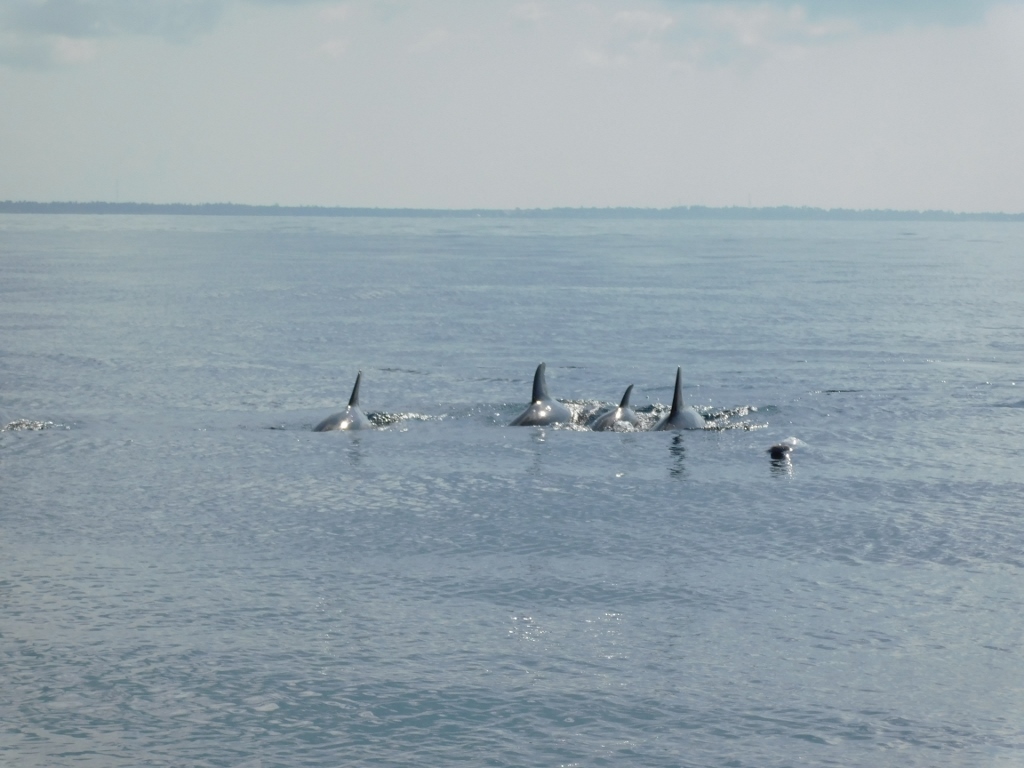 Dolphins close to Kizimkazi beach
Dolphins close to Kizimkazi beach
We did it all over again. Two young men from my boat and I jumped into the water, but, of course, the dolphins swam away again in the meantime and I, after enjoying the water for a short period of time, climbed up again with relative difficulty into the boat with that small ladder, while the boys tried to locate the dolphins and see them under the water. The guides from the boat offered me their hands very kindly, but I knew from experience that at that moment I would become a “pendulum” and then it would become really bad for both me and them, so all the work had to be done by the muscles of my hands and arms. I also realised that there was no way we were really “to swim with dolphins” simply because they are wild animals that go there for their own business and they don’t come here to “play” with idle tourists. I decided to watch them only from the boat and that was not a bad decision at all.
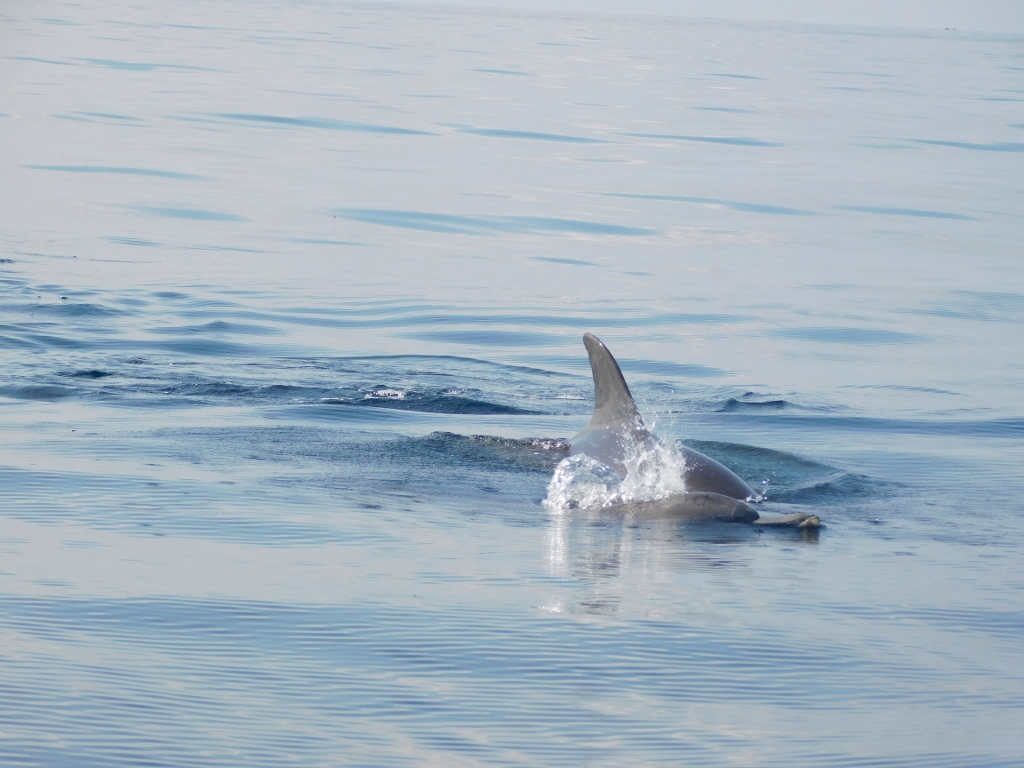 Dolphins close to Kizimkazi beach
Dolphins close to Kizimkazi beach
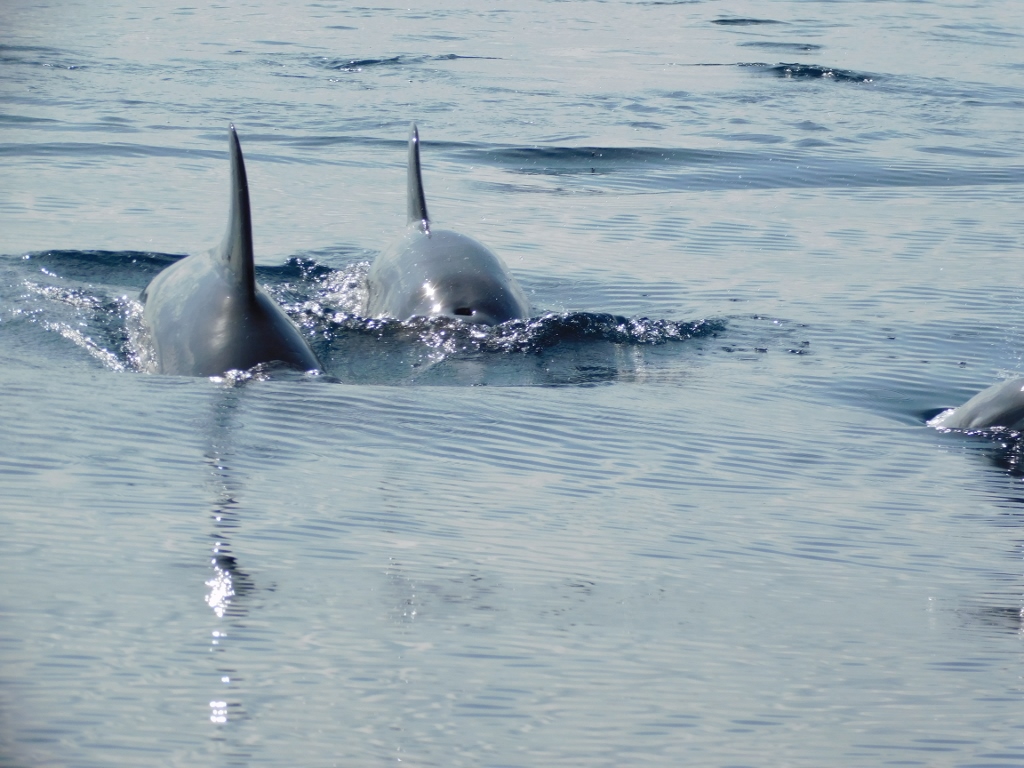 Dolphins close to Kizimkazi beach
Dolphins close to Kizimkazi beach
The guys from the group, both those from my boat and those from the other boat, however, did not give up so easily, so we all moved together a few more times. They enthusiastically jumped into the water, occasionally seeing dolphins under the surface, but I think that all the players in this event got a little tired in the end. The dolphins went on their way and we all returned to the boats, so we could then head back towards Kizimkazi beach.
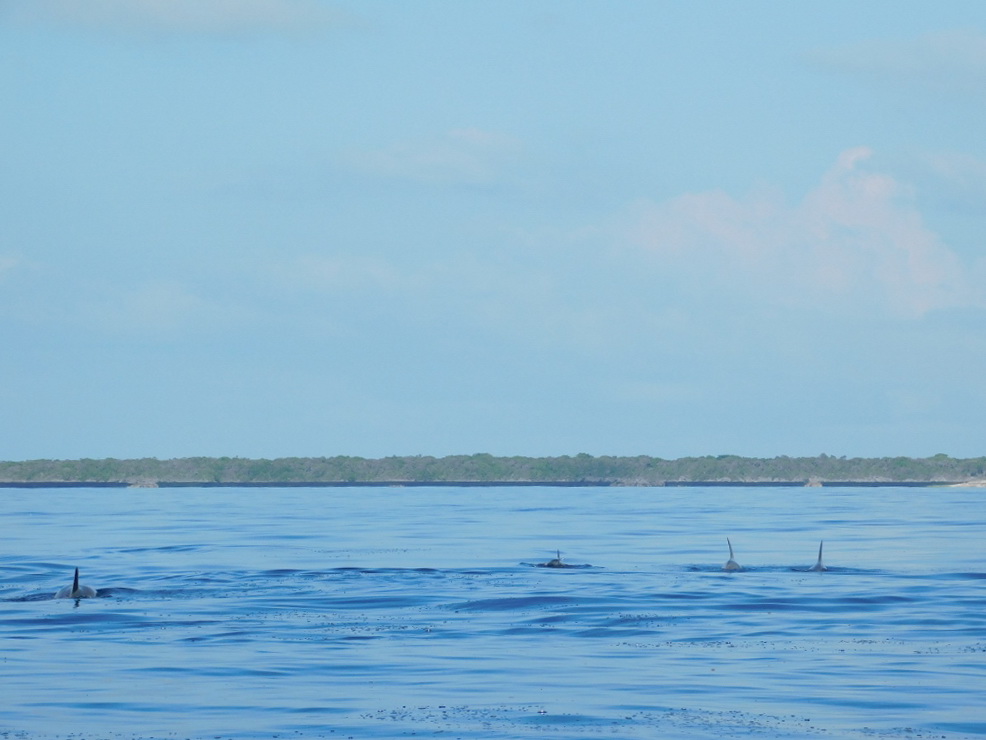 The dolphins are leaving us
The dolphins are leaving us
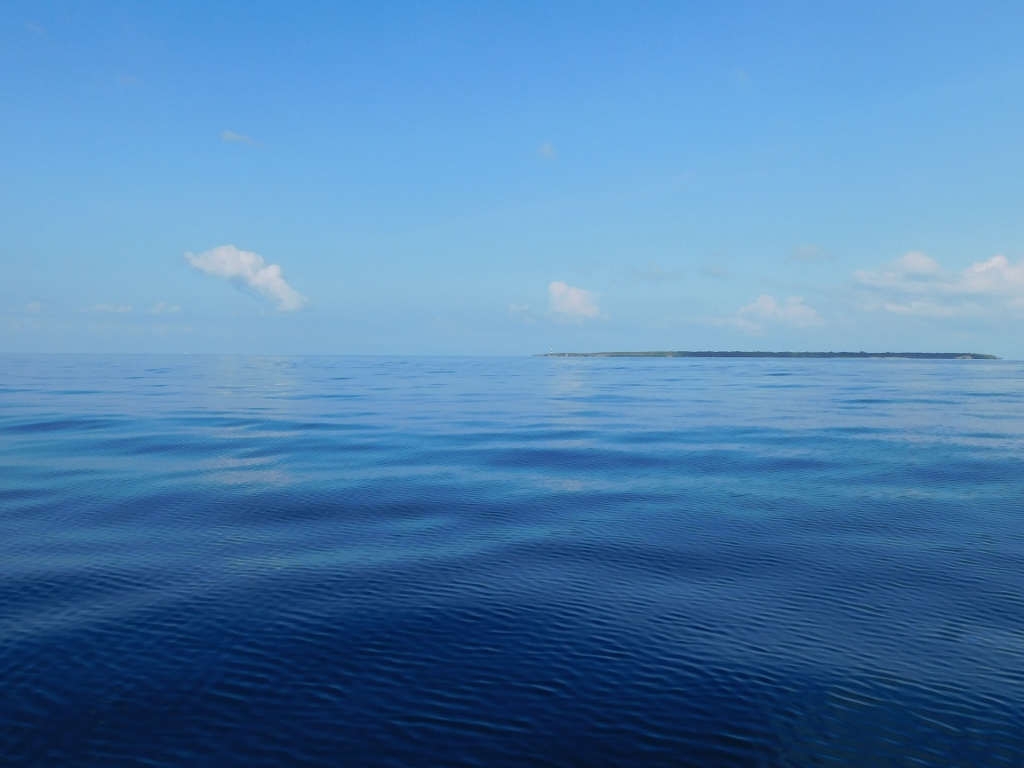 The “show” with dolphins is over
The “show” with dolphins is over
The return to the beach was very interesting for me. In the beginning, there were so few ripples that the surface of the water looked almost like oil.
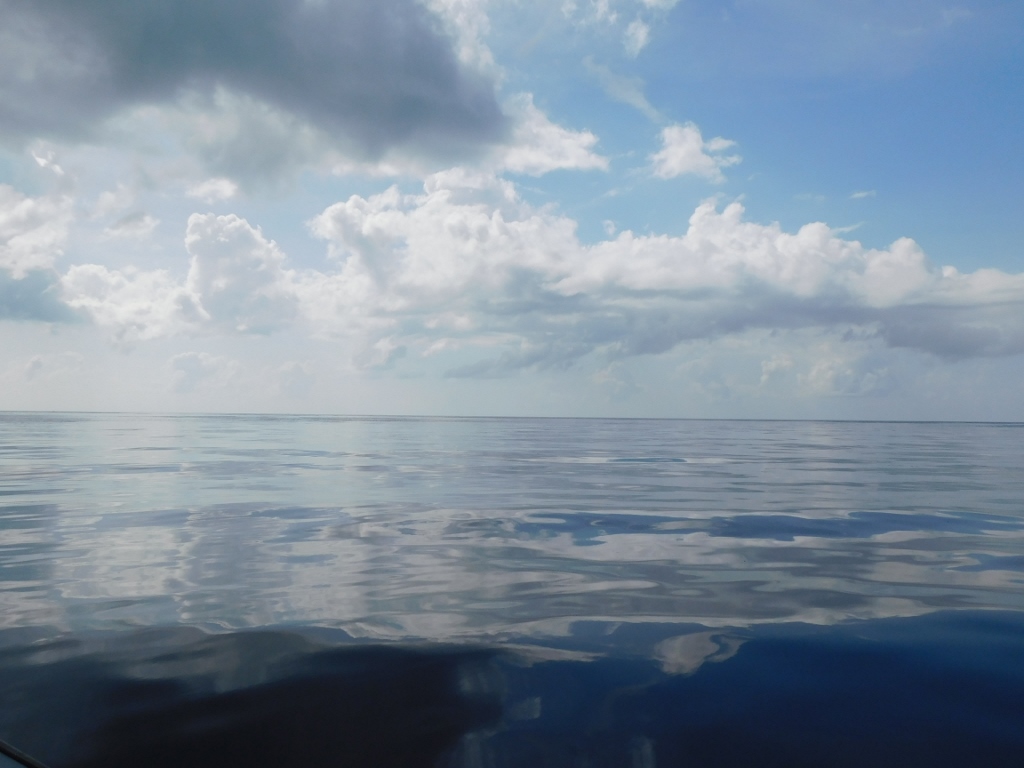 Ocean close to Kizimkazi beach
Ocean close to Kizimkazi beach
And when we got closer to the beach, the local guys driving the boats must have chosen a different path or the sun’s rays fell at a different angle compared to the beginning of the boat ride, but whatever the reason, the colour of the water closer to the shore was incredibly beautiful.
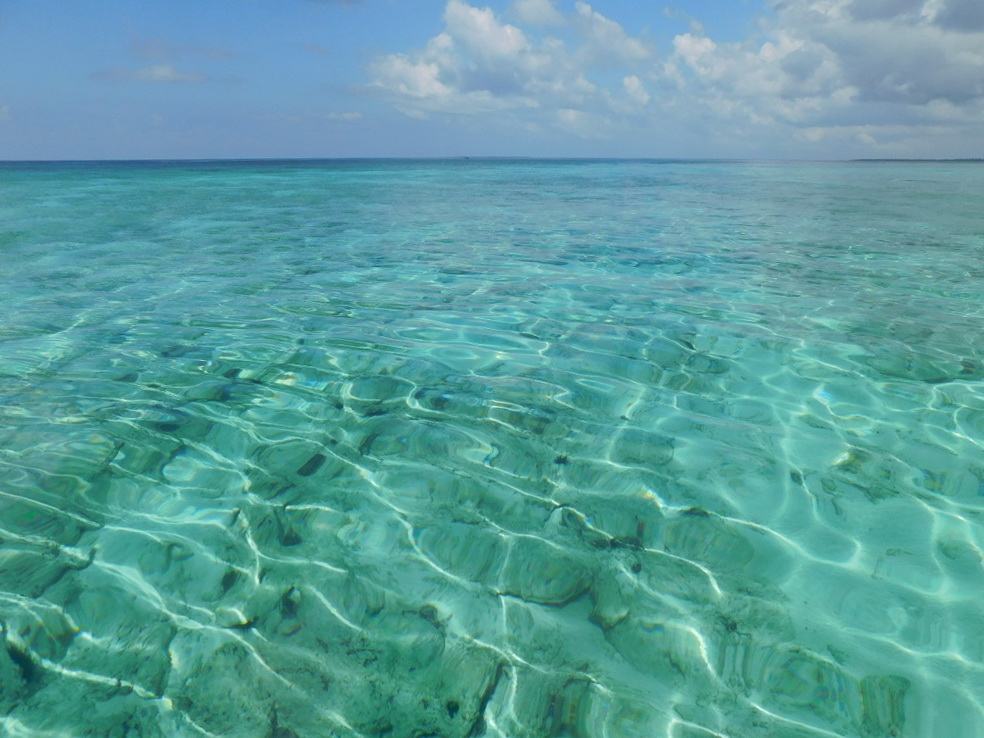 Water close to Kizimkazi beach
Water close to Kizimkazi beach
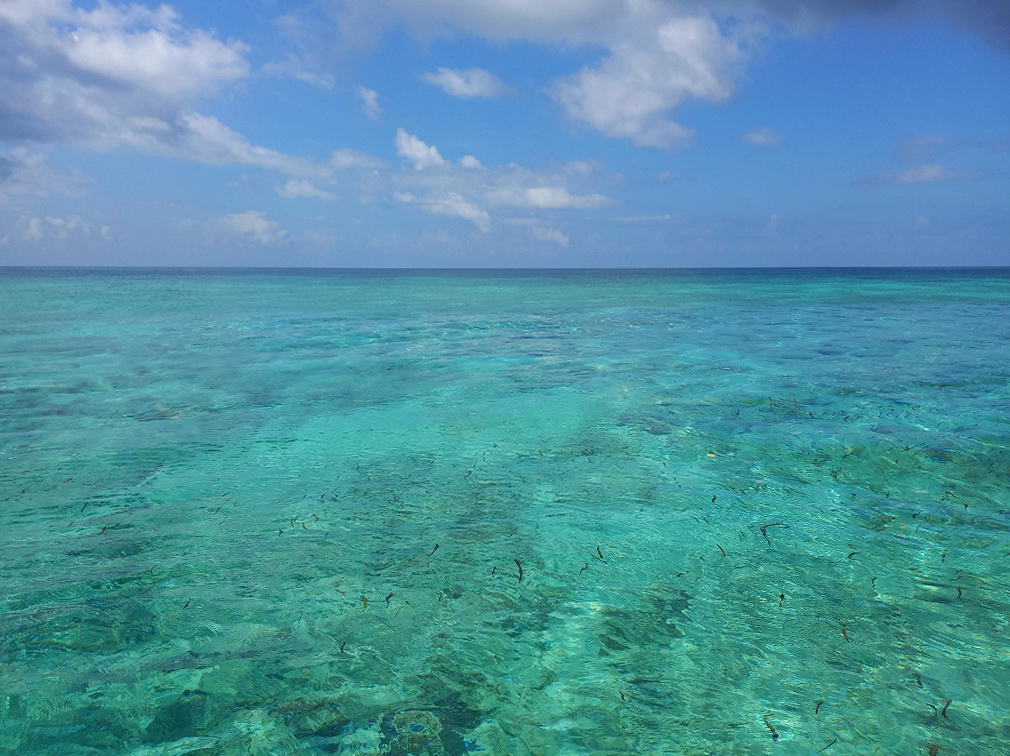 Water close to Kizimkazi beach
Water close to Kizimkazi beach
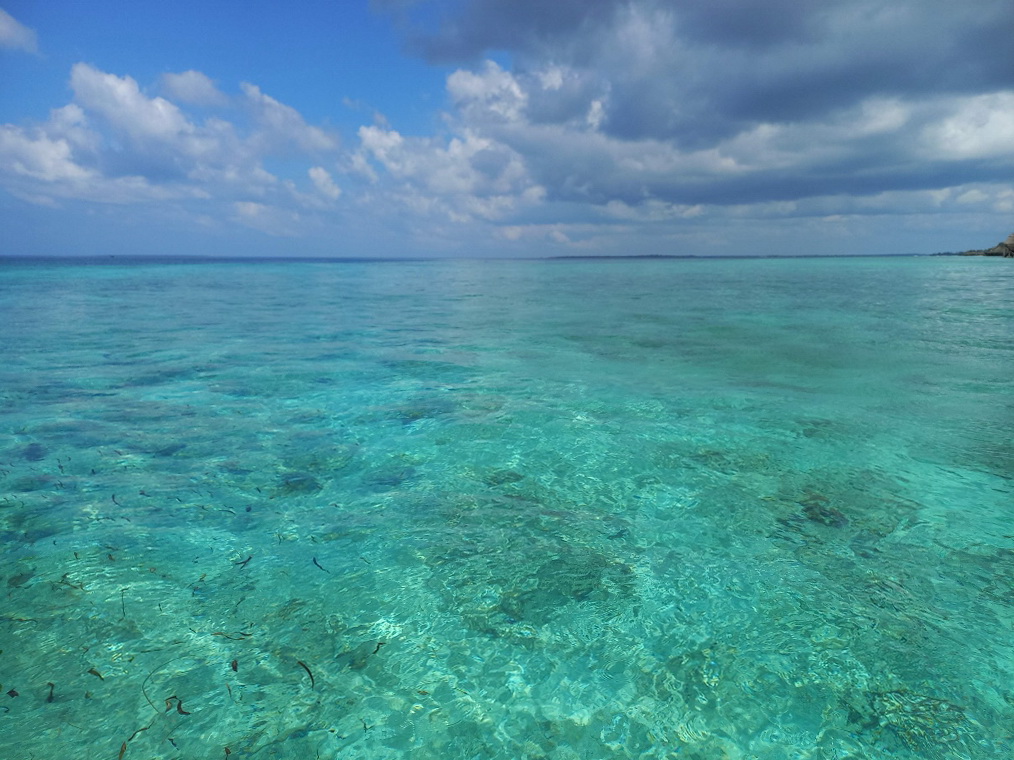 Water close to Kizimkazi beach
Water close to Kizimkazi beach
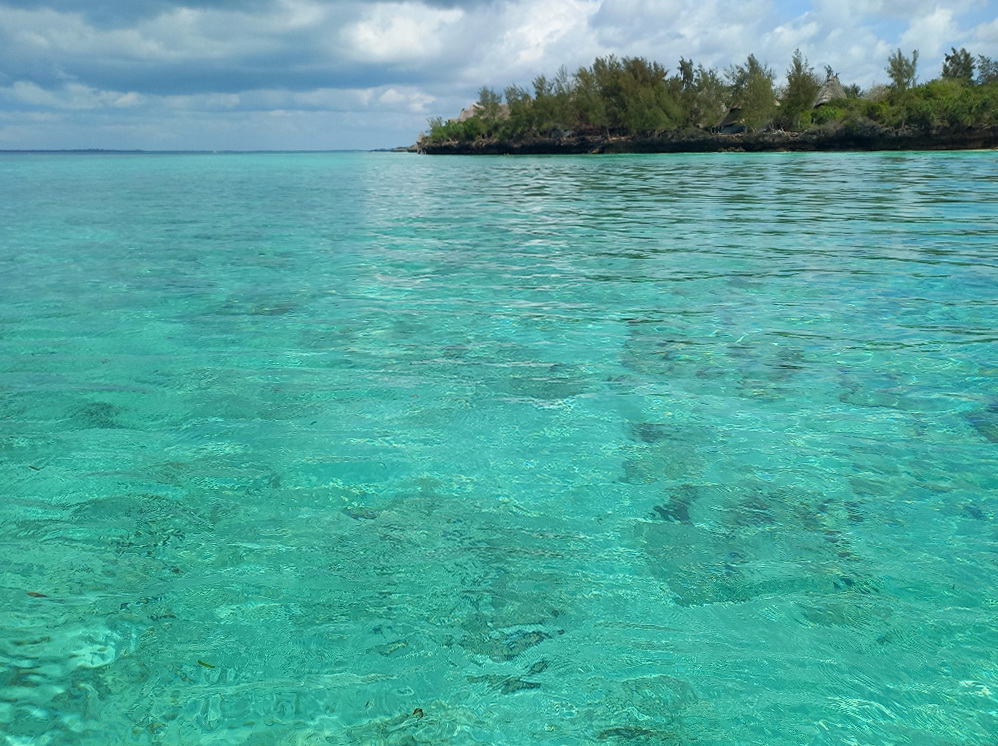 Water close to Kizimkazi beach
Water close to Kizimkazi beach
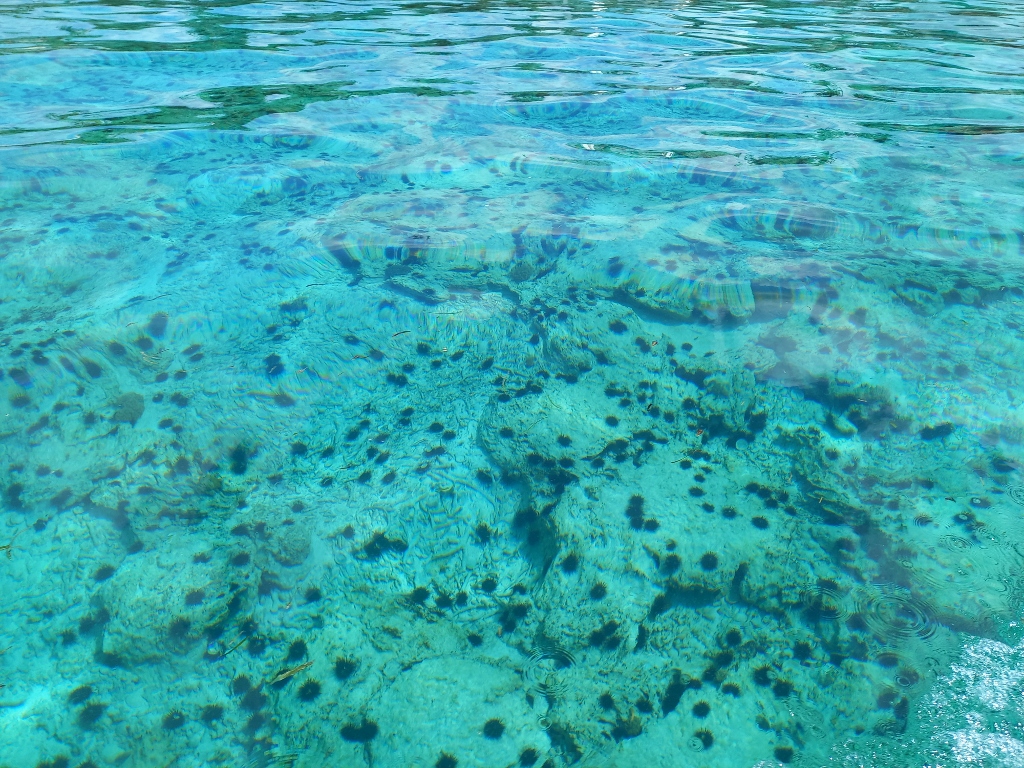 Water close to Kizimkazi beach
Water close to Kizimkazi beach
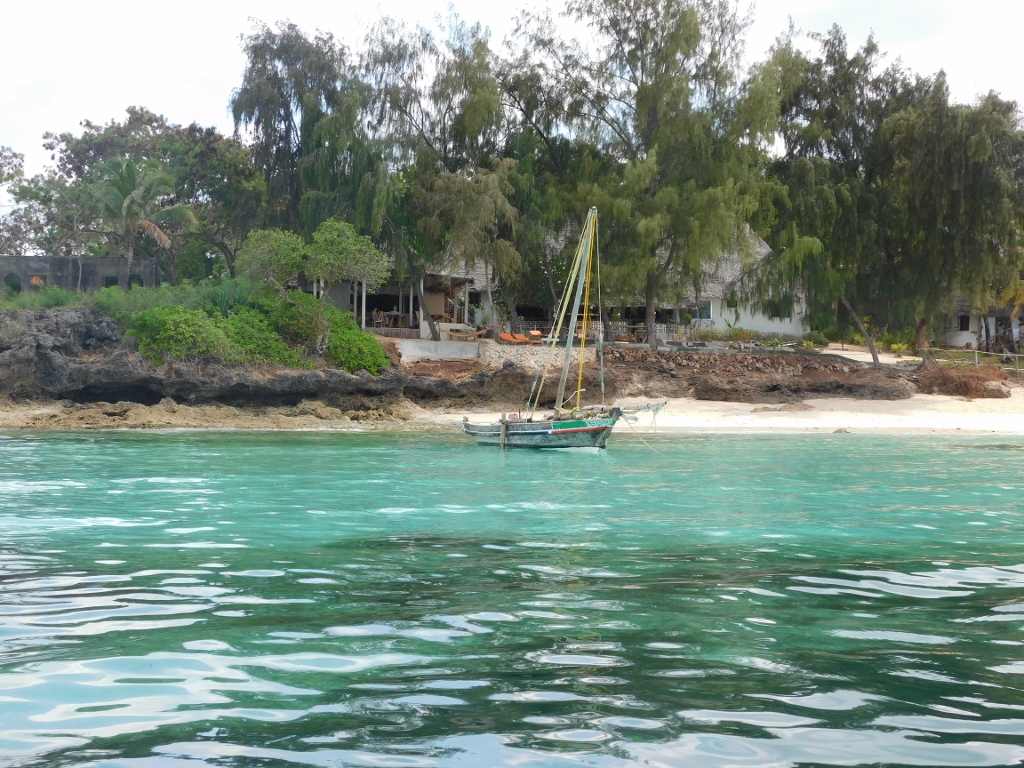 Kizimkazi beach
Kizimkazi beach
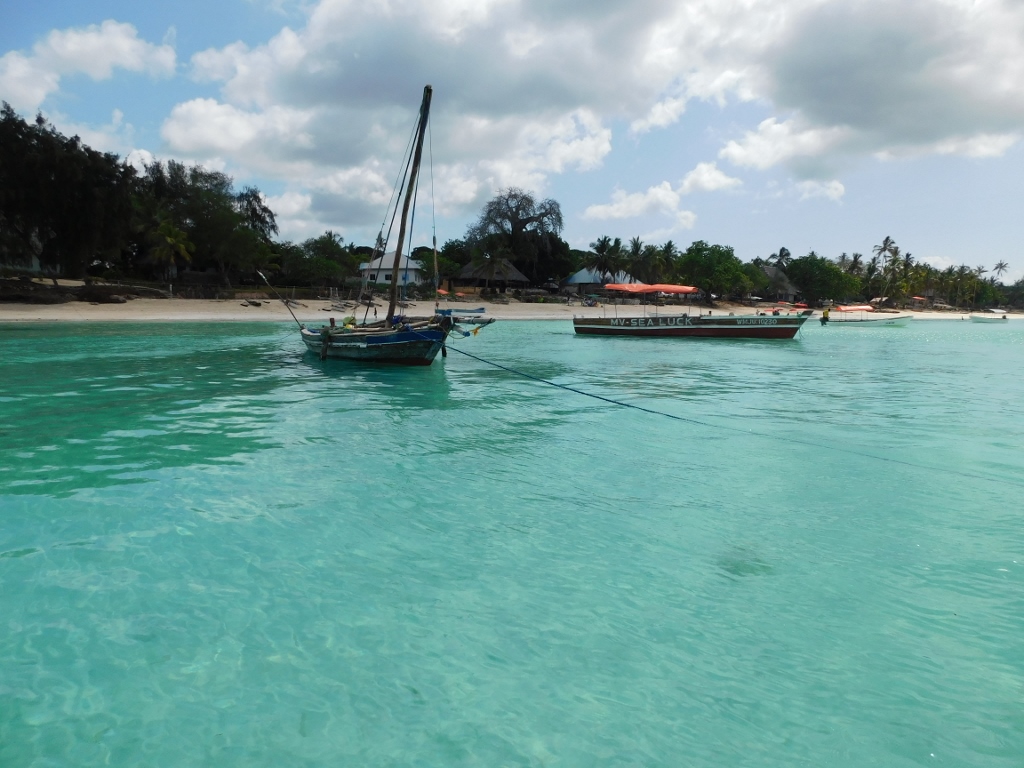 Kizimkazi beach
Kizimkazi beach
Before getting out of the boat, I took the opportunity to take another picture of the water at Kizimkazi beach and the scene was certainly splendid.
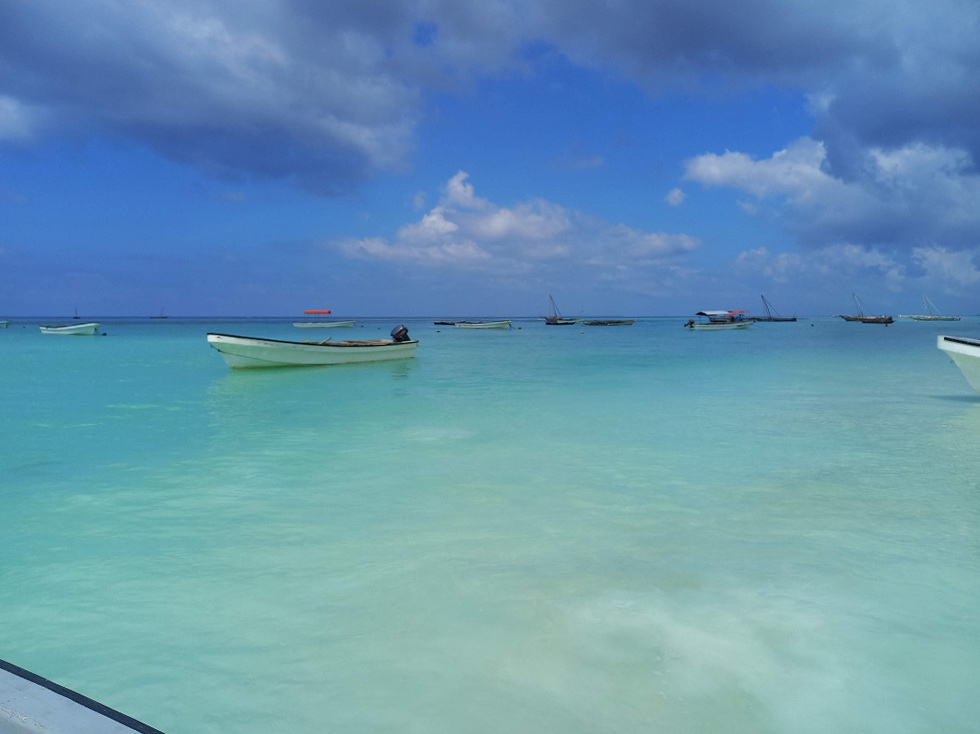 Water at Kizimkazi beach
Water at Kizimkazi beach
Even when I went to the beach itself, I could not stop admiring the beauty of the sights.
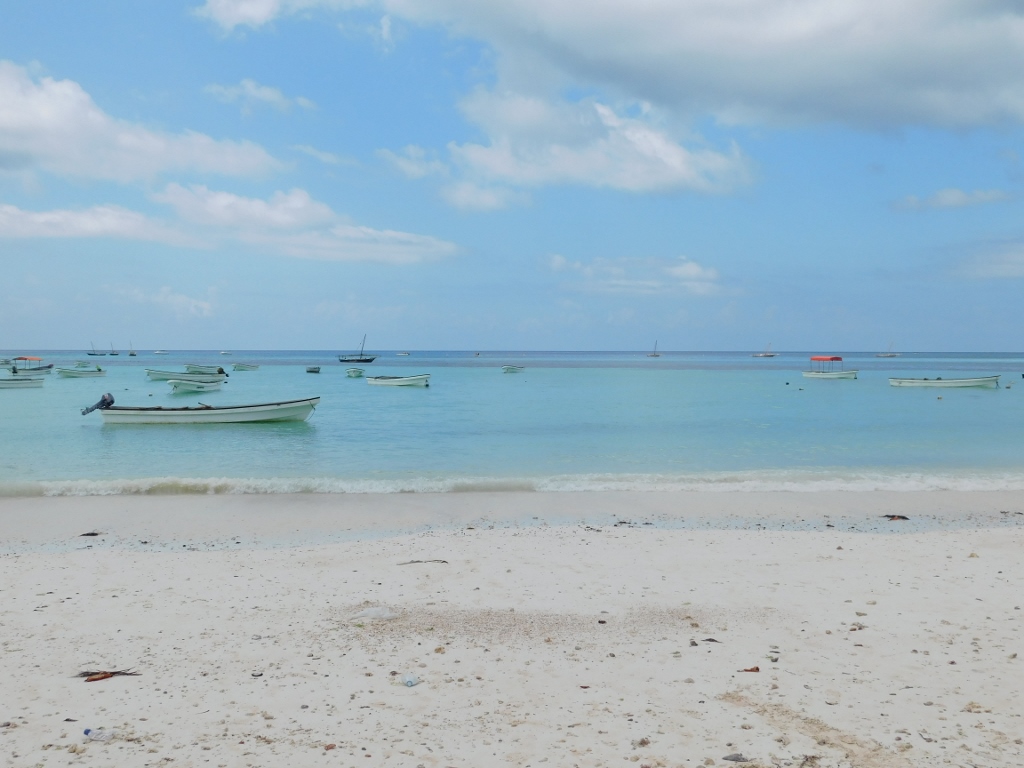 Kizimkazi beach
Kizimkazi beach
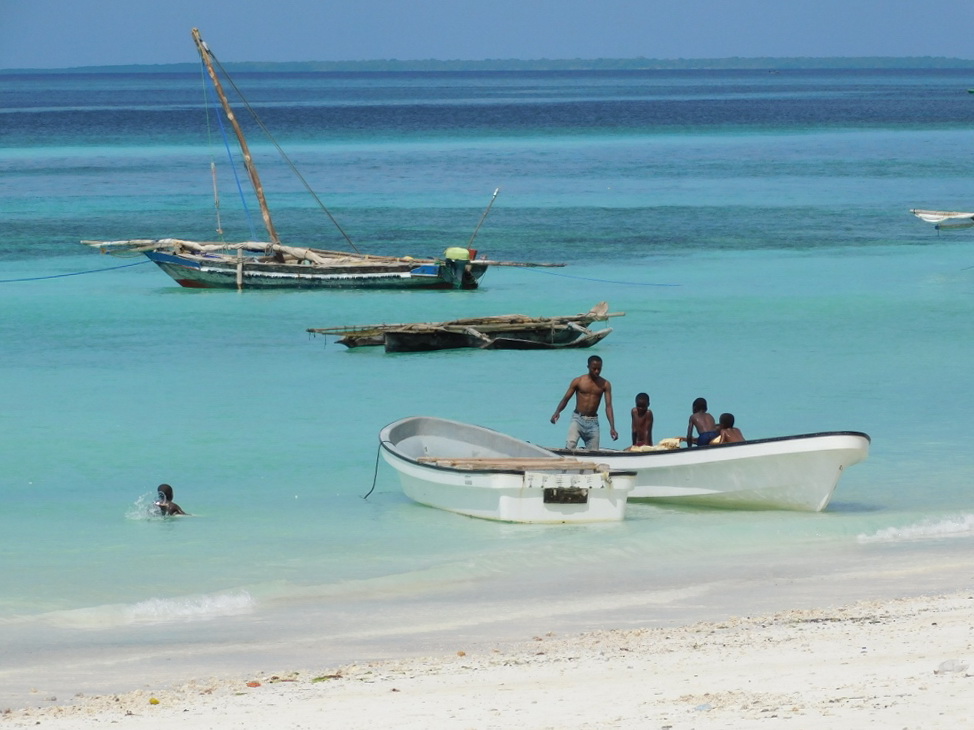 Kizimkazi beach, a detail
Kizimkazi beach, a detail
Soon we boarded the mini-bus and now headed towards the eastern coast of the island of Unguja, to the town of Paje. I continued to find the drive through the interior of the island of Unguja very interesting and I intensively observed what was happening beside the road and on the road.
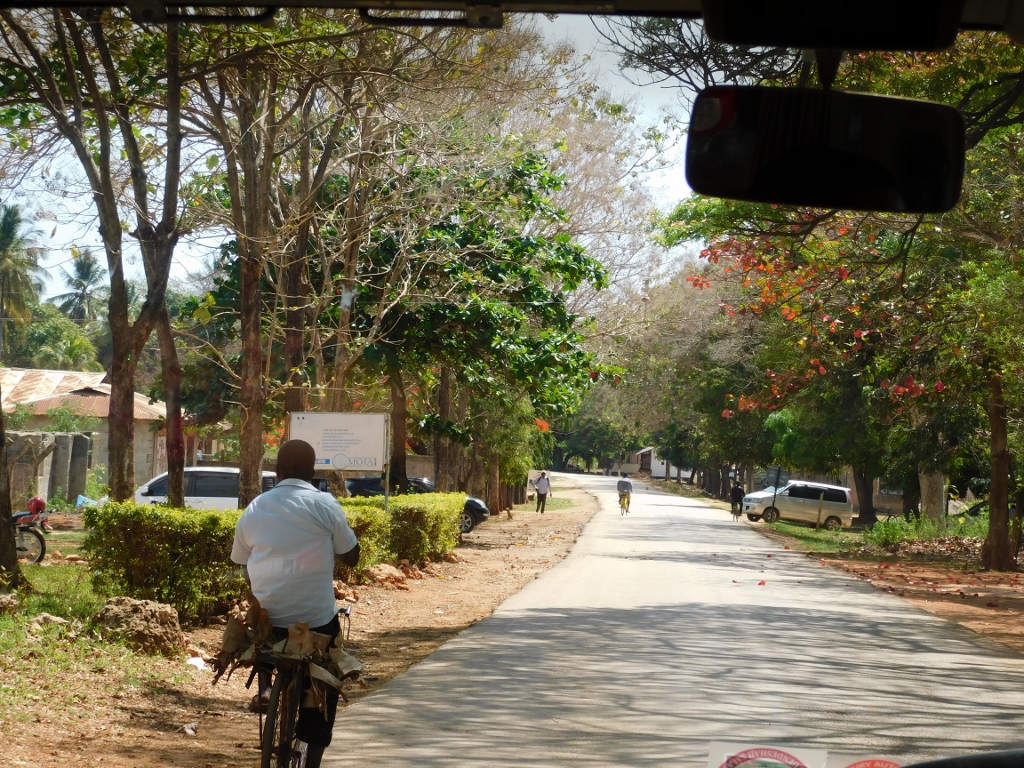 Interior of the island of Unguja
Interior of the island of Unguja
In the town of Paje, we took a break by the main road so that some members of the group could stop by an exchange office here and I used the opportunity to look around and take photos. While I was standing on the extension next to the main road, I saw something smoking nearby. I had to go over and see what it was all about. As it turned out, some food was being prepared.
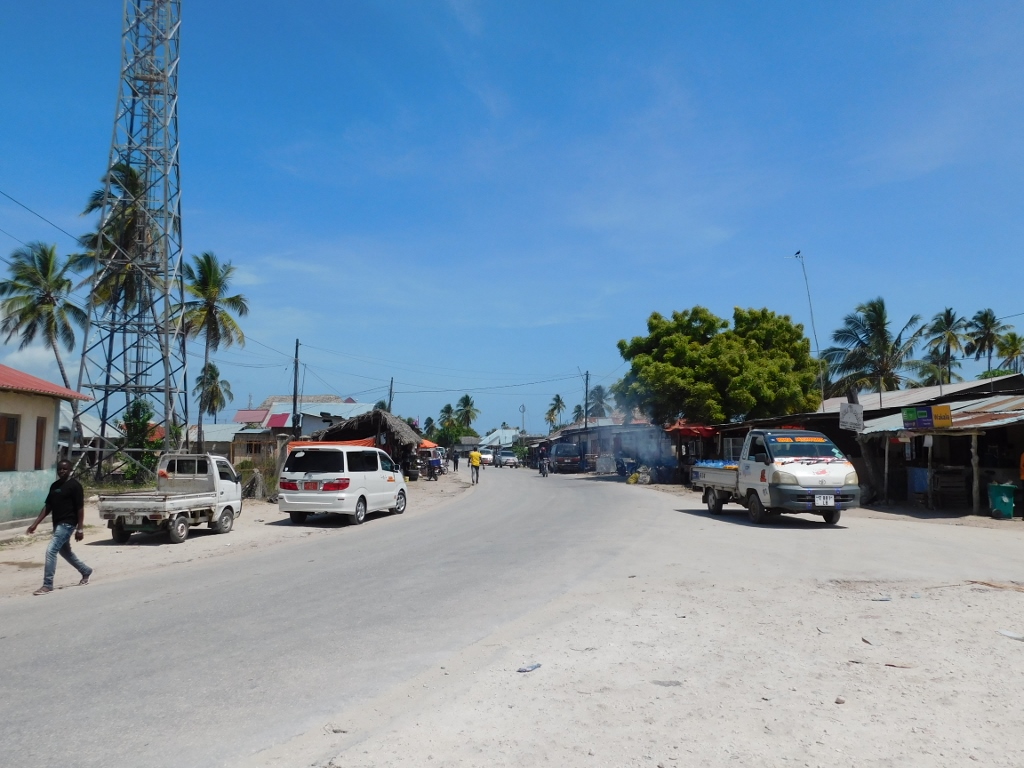 Main road through Paje
Main road through Paje
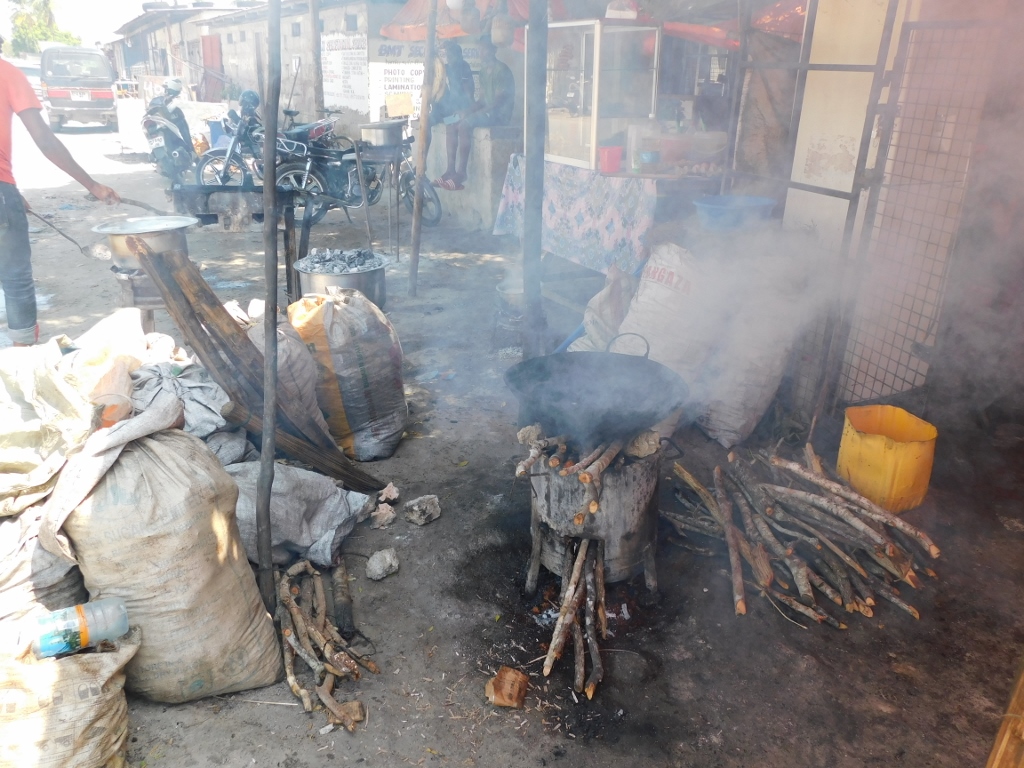 Detail from beside the main road through Paje
Detail from beside the main road through Paje
I spotted a local grocery store behind the exchange office. I always like to see what’s on sale as far as fresh fruits and vegetables are concerned.
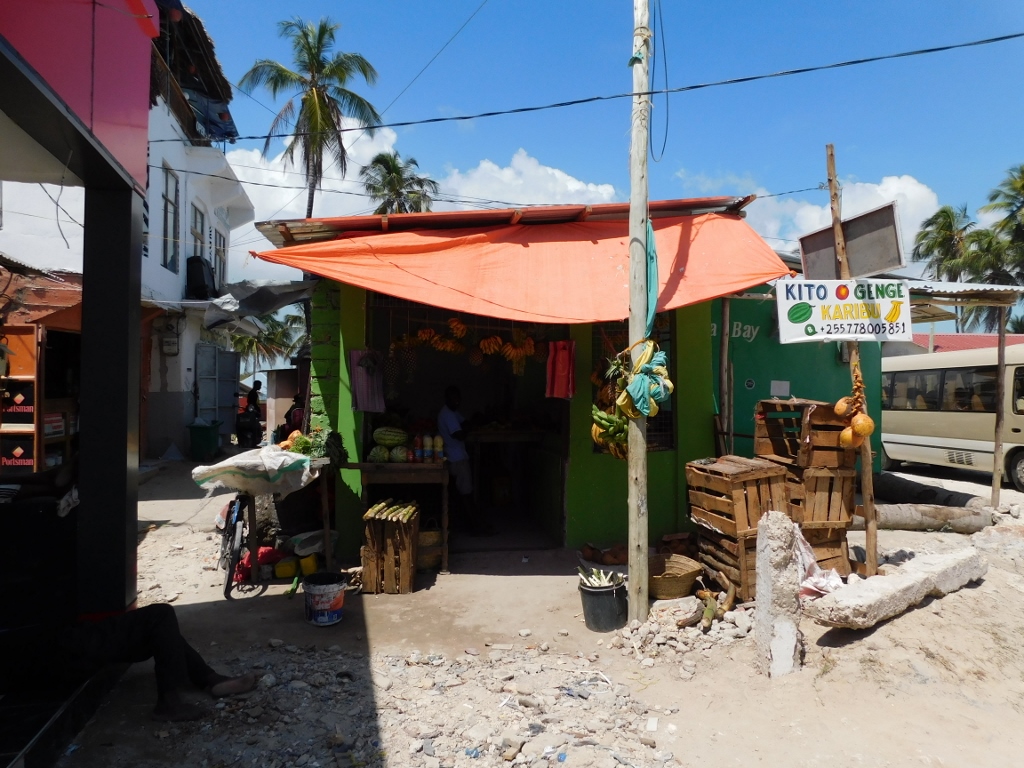 Grocery store in the town of Paje
Grocery store in the town of Paje
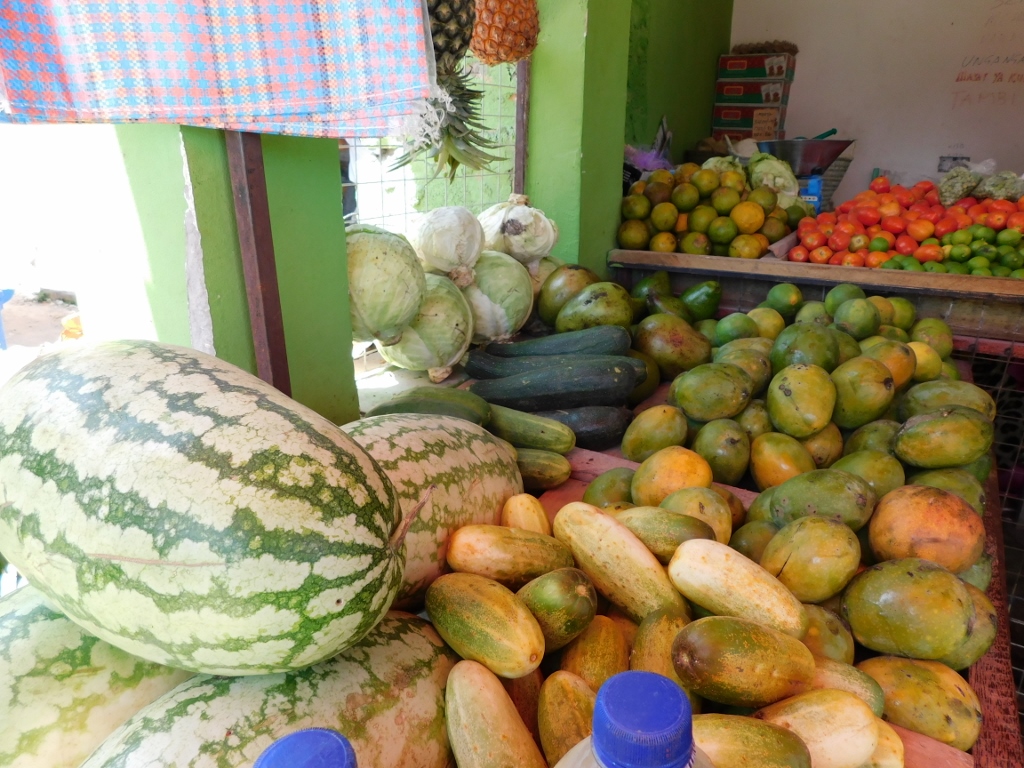 Grocery store in the town of Paje
Grocery store in the town of Paje
When we all finished with what we had, we boarded the mini-bus again and drove a few hundred meters further where we entered the fenced area of a hotel. As far as I got it, travel agencies make an agreement with a hotel that has good access to the beach, sun loungers, a restaurant, a bar and possibly a swimming pool, and then they bring small groups of tourists only as part of an excursion and for a few hours. This enables visitors to comfortably visit and stay in other places, not only where they are stationed. On the other hand, it is a source of additional income for hotels, while using the capacities they already have. When we arrived, the vast majority of sun loungers under wooden and straw parasols were empty, so we certainly couldn’t bother the hotel’s regular guests too much.
After I had left my things next to the two sun loungers under a parasol that I chose together with Lela, that wonderful woman with whom I had a very nice time during this journey, I went to see what the beach looked like and to take photos.
 Beach in the town of Paje
Beach in the town of Paje
The beach in Paje is known as a great place to learn kitesurfing, but what characterises it, after all like a good part of the island of Unguja (which, by the way, everyone simply calls Zanzibar), is a big difference between the tides. This phenomenon is especially pronounced on the eastern coast of the island and likewise here in the town of Paje as well. On an average, the difference between the high and the low tides here is about 3 to 4 metres. In some places along the east coast of the island, this can mean that at low tide the water recedes more than 1 km away from the shore! At the time when I first came to the beach, the low tide was only just starting so the water was still very close to the hotel itself.
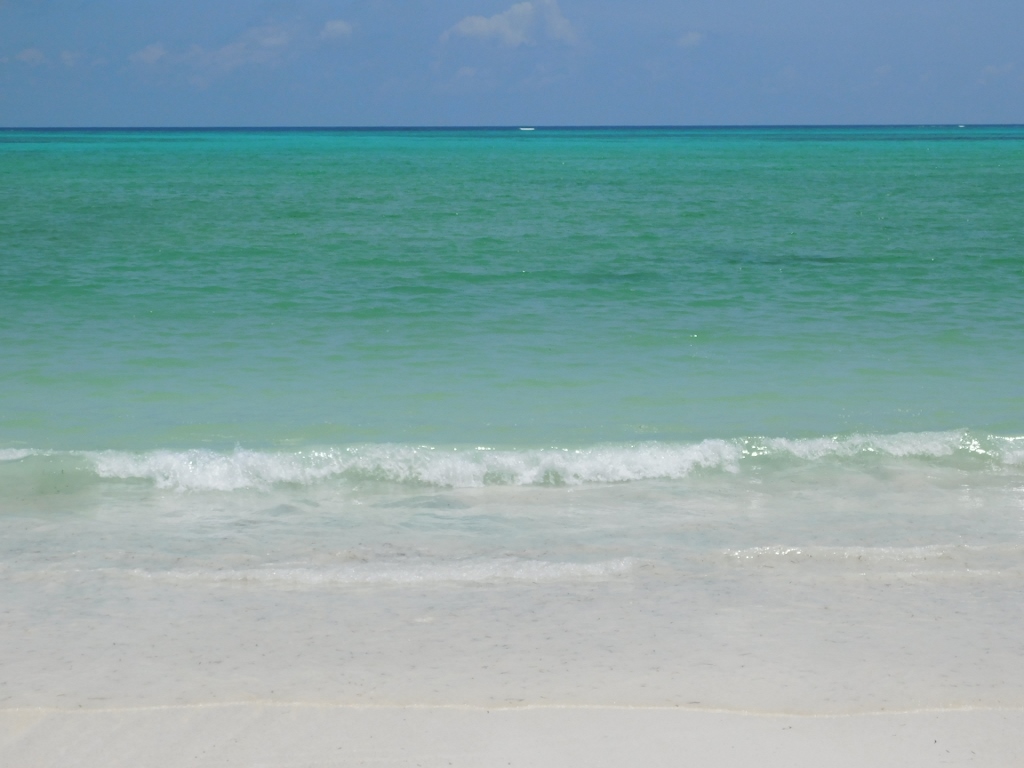 Beach in the town of Paje
Beach in the town of Paje
After this short walk within the hotel, I returned to the lounger and started to enjoy the lazing around, continuing the interesting chatting with Lela. But, to make this story even more interesting, the two of us ordered coffee first and cocktails later. I normally don’t drink any alcohol during the day, but here I was just lying in the shade and I knew this would take a few hours, so why not?
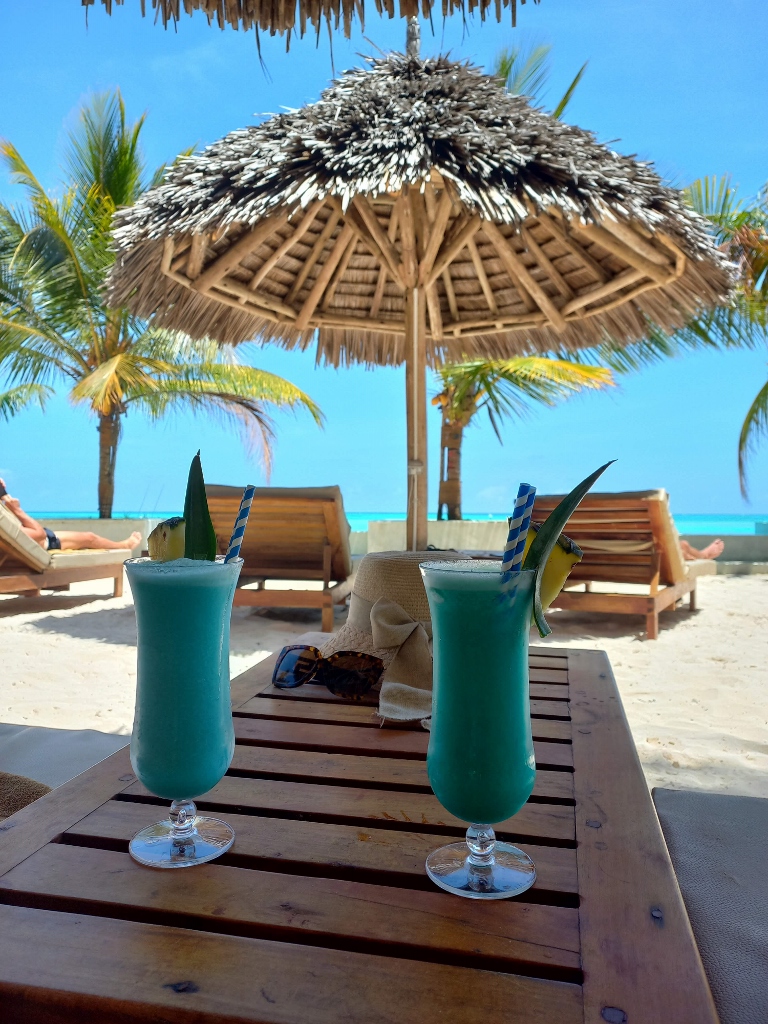 Hedonism beside a beach in Paje
Hedonism beside a beach in Paje
Admittedly, at one point I entered the pool for a short time. As a rule, I don’t use swimming pools when I’m at the seaside, but here I was aware of a very nice combination of colours I could see from my lounger, so I wanted to have a memory from this particular place. Thus, I asked Lela to take a picture of me, which she was happy to do.
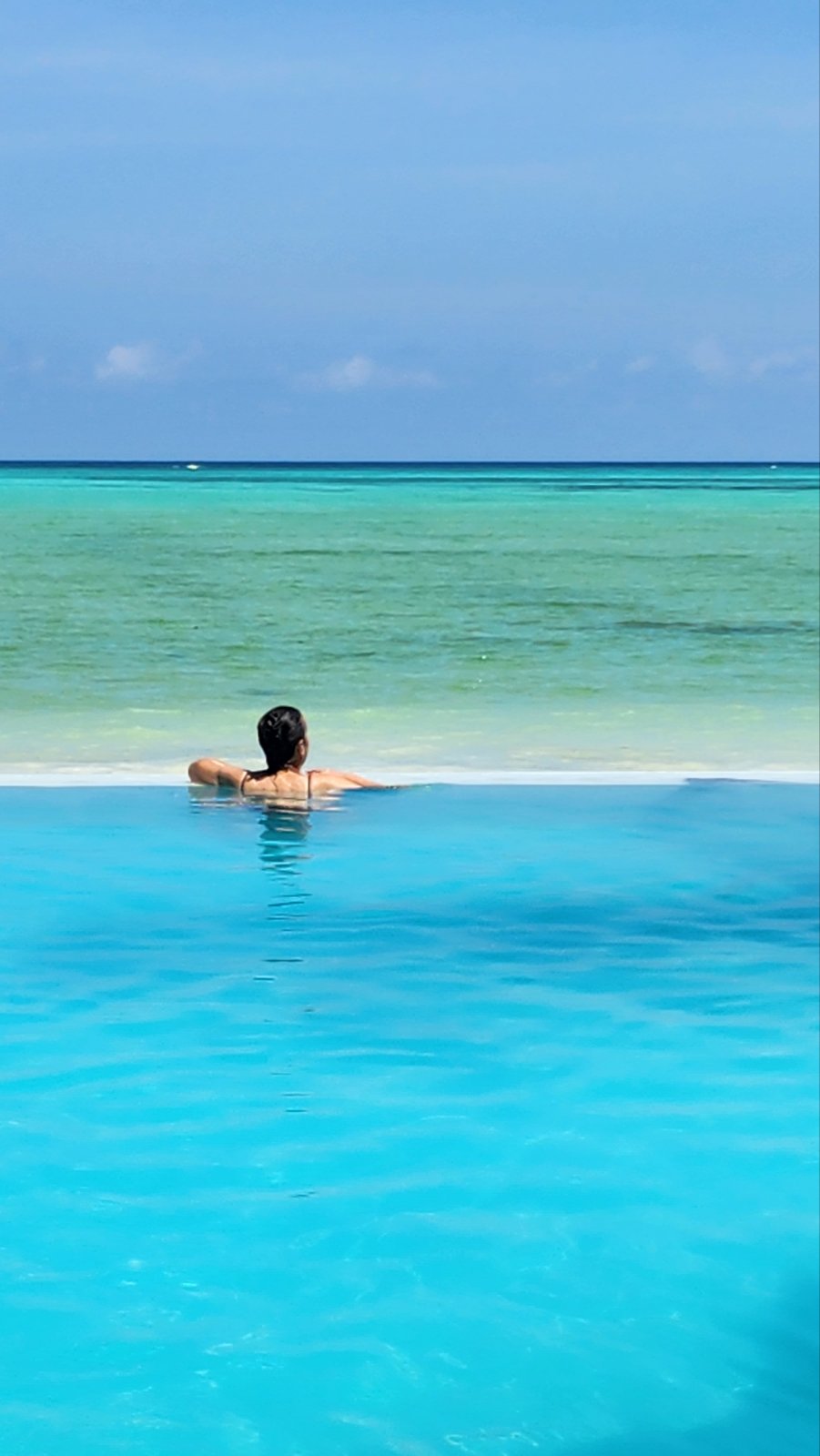 Blue, how I want you blue (Photo by: LŠ)
Blue, how I want you blue (Photo by: LŠ)
Since we stayed here for a few hours, we needed to eat something and we could do it without moving from the sun loungers. The enjoyment was complete.
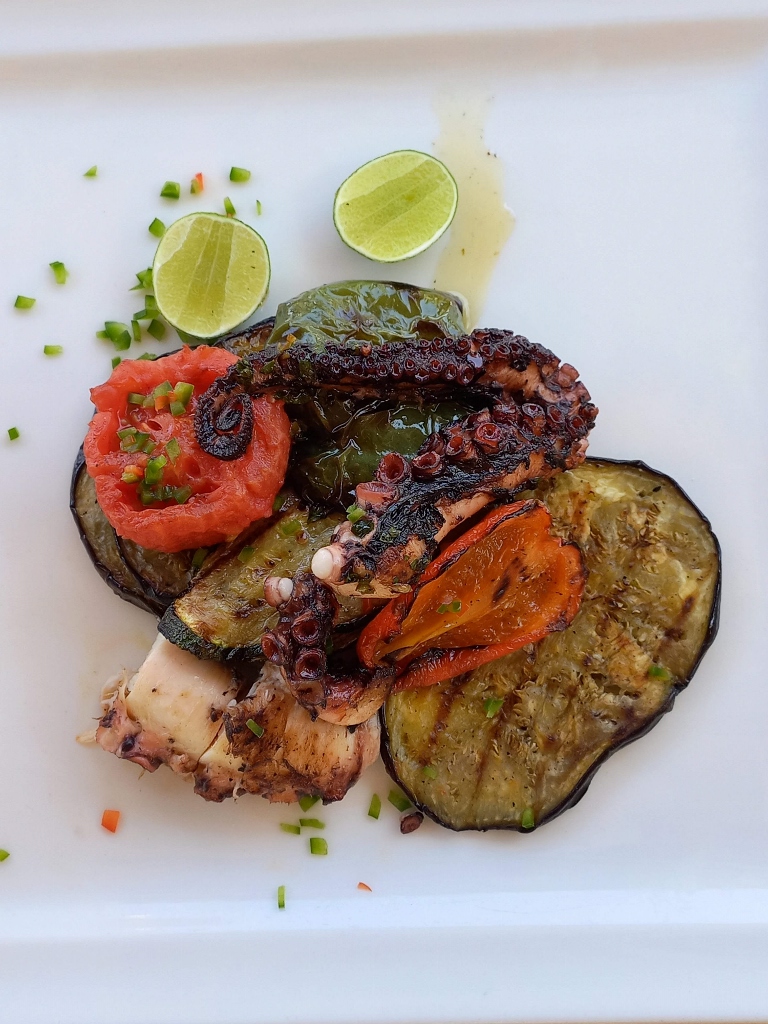 Hedonism beside a beach in Paje
Hedonism beside a beach in Paje
Of course, it’s not like I was lying down all the time. From time to time, I walked again within the hotel and to the beach itself, because there were some very nice and interesting sights. Meanwhile, the waters of the ocean continued to ebb slowly, as part of the low tide.
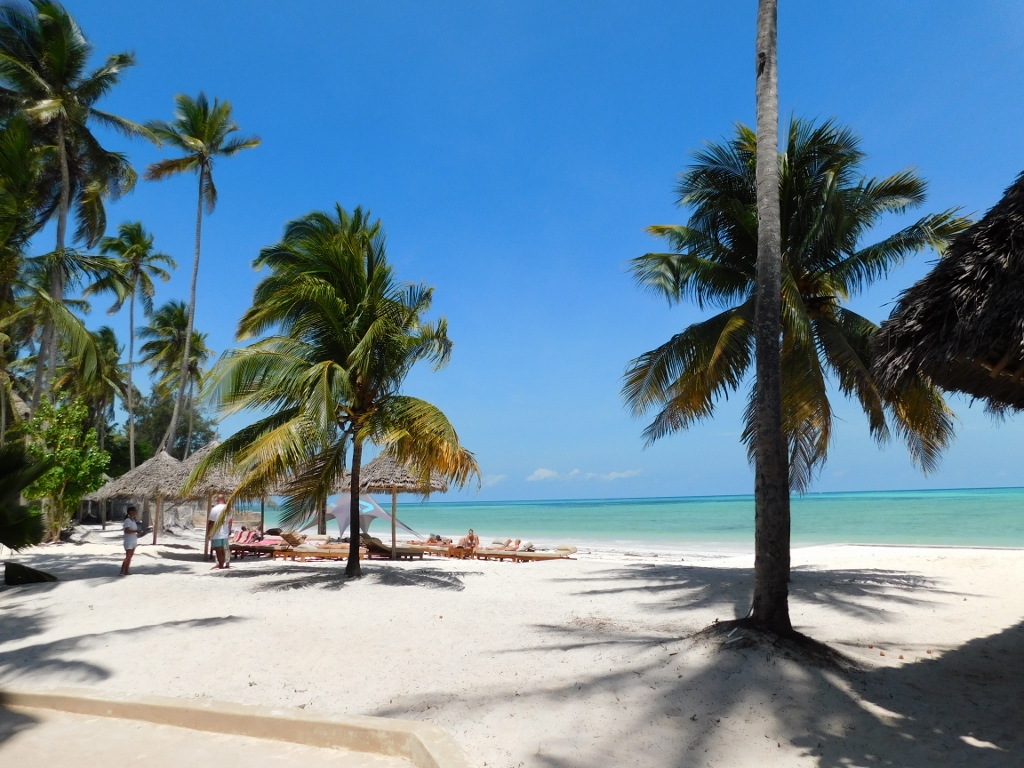 Beach in the town of Paje
Beach in the town of Paje
 Beach in the town of Paje
Beach in the town of Paje
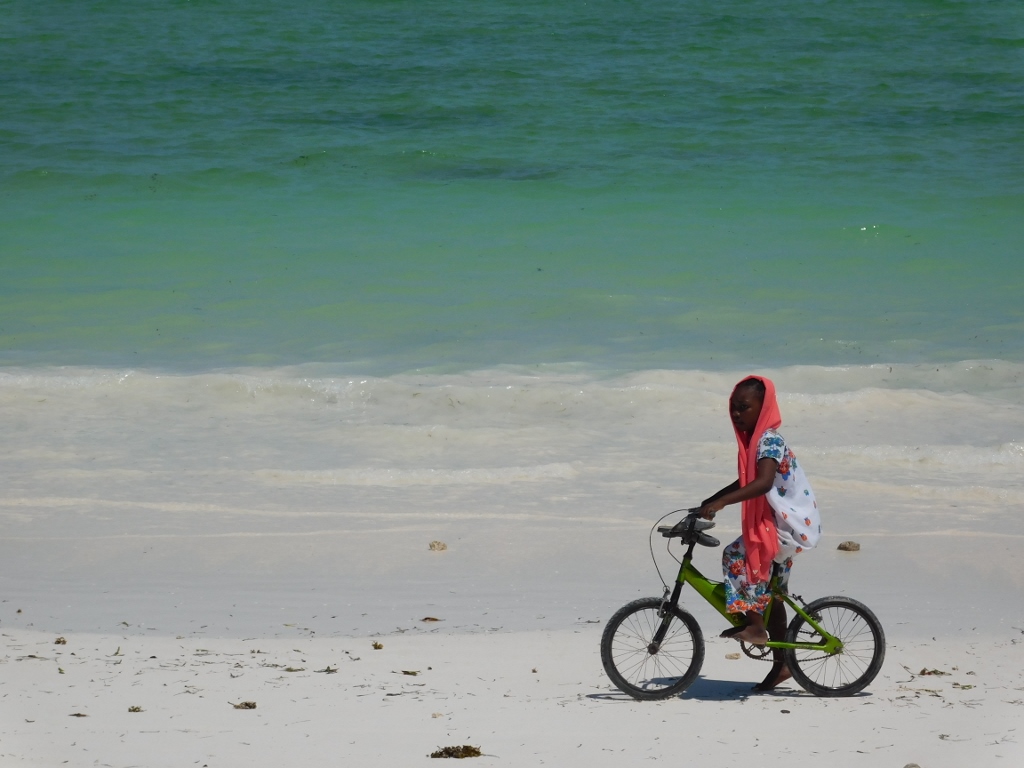 Beach in the town of Paje
Beach in the town of Paje
By the way, a certain number of members of the Maasai people live all over Zanzibar. They traditionally live in Kenya and northern Tanzania and primarily raise cattle, while also being known as great warriors. As a rule, they can be easily recognised – on the one hand, they are strikingly slender and, on the other hand, they traditionally dress in bright red clothes. However, as tourism in Zanzibar has boomed in recent years, many of them have come here from the mainland to take advantage of the good circumstances to make money. Often it comes down to working in hotels as security guards, but many of them walk the beaches, sell souvenirs, take photos with tourists and tell stories about hunting lions with their bare hands. In other words, they tell exaggerated stories that seem exotic and interesting to foreigners. But, it is said that other, more personal services are also provided.
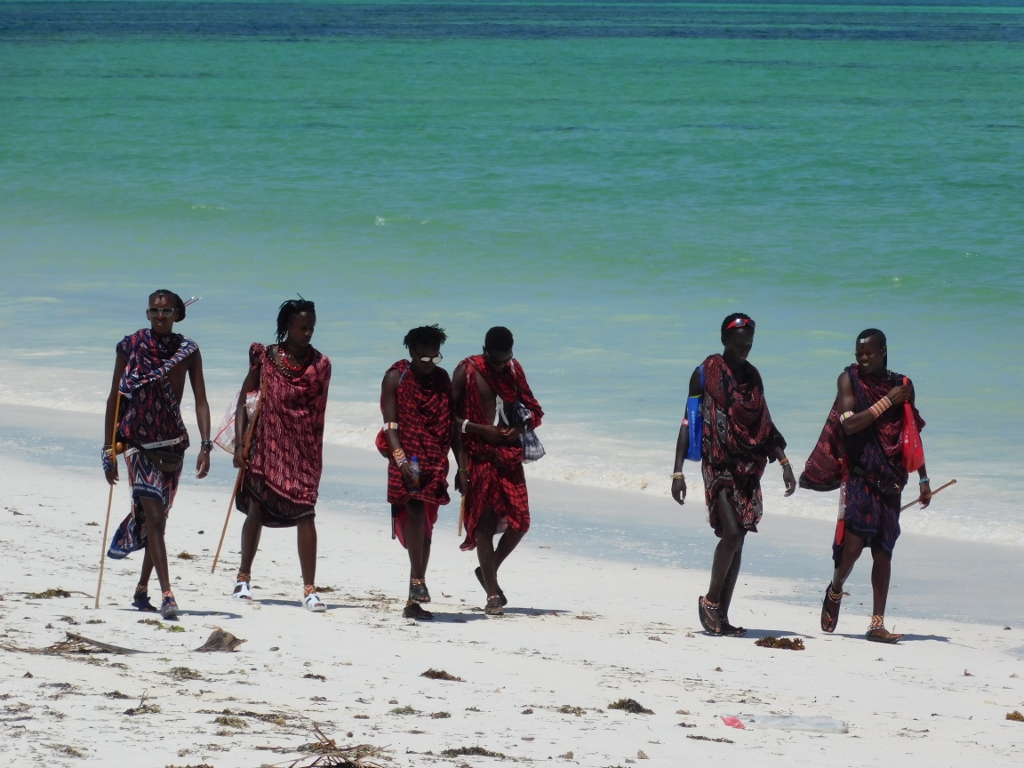 Maasai on the beach in Paje
Maasai on the beach in Paje
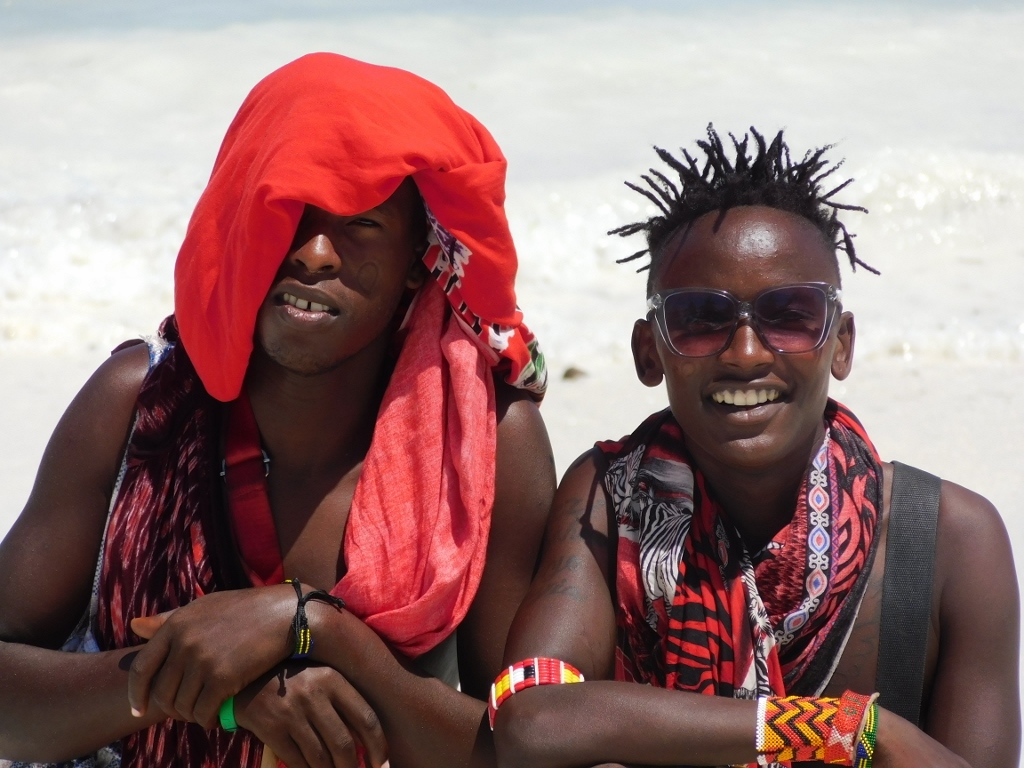 Maasai on the beach in Paje
Maasai on the beach in Paje
After the wonderful time spent near Paje beach, we took the mini-bus again to drive around the middle of the island, and here is also the map that shows the places I went to during this stay in Tanzania.
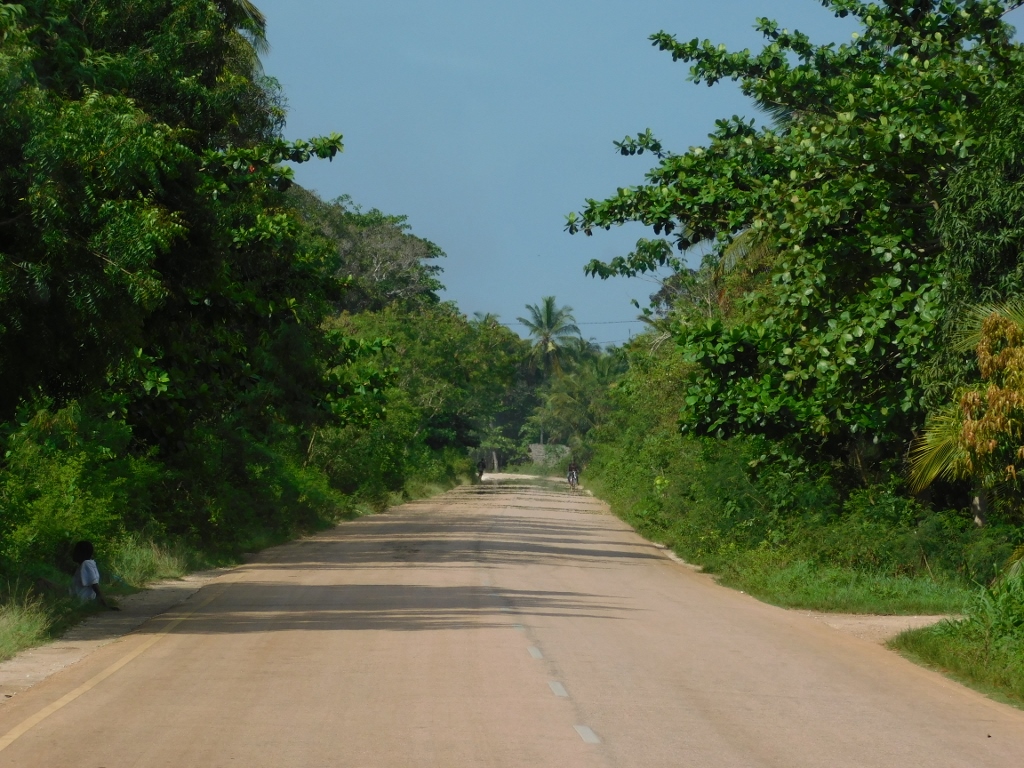 Interior of the island of Unguja
Interior of the island of Unguja
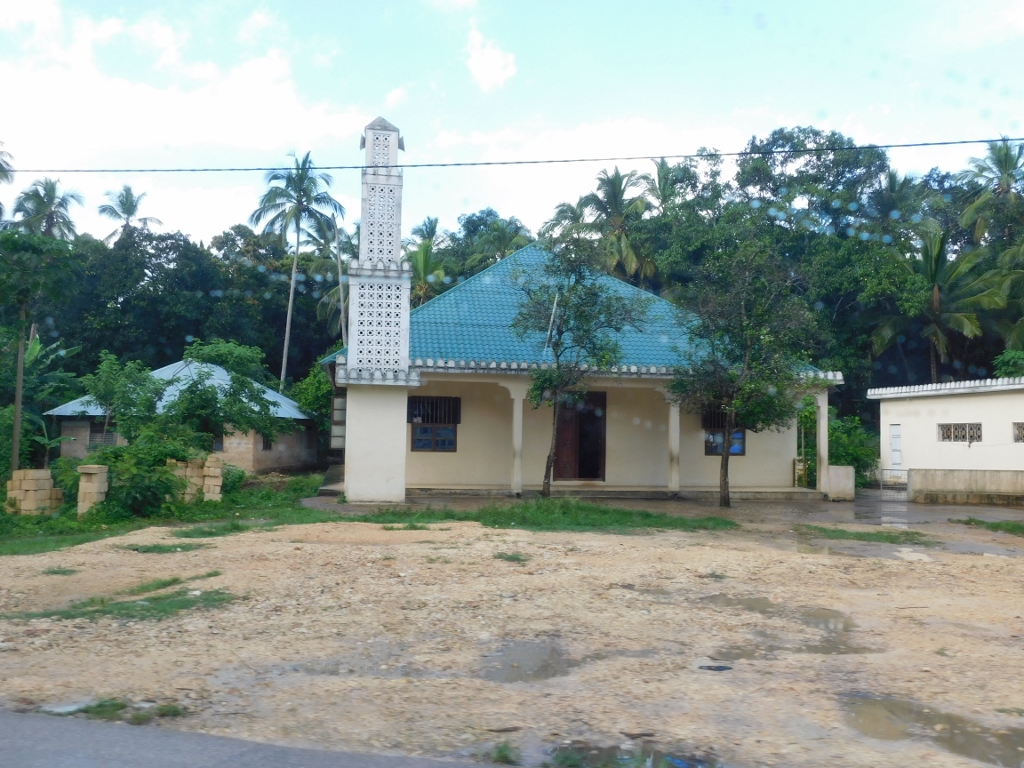 Mosque beside the road on Unguja
Mosque beside the road on Unguja
I was on Zanzibar during the “short rains” season that lasts from mid-October to mid-December. On this occasion, that meant a sudden downpour. It didn’t bother us one bit as we were in the mini-bus and it seemed to me that the passengers in a type of public transport we saw on the road also didn’t have any problems with the rain. These miniature trucks converted into public transport vehicles that are entered from the back where the conductor stands are called “dala dala,” which comes from a corrupted pronunciation of the word “dollar,” since the ticket is one dollar. I wanted to go somewhere using this transport one day, but in the end I didn’t have enough time for that. That’s what I have to do next time I go to Zanzibar.
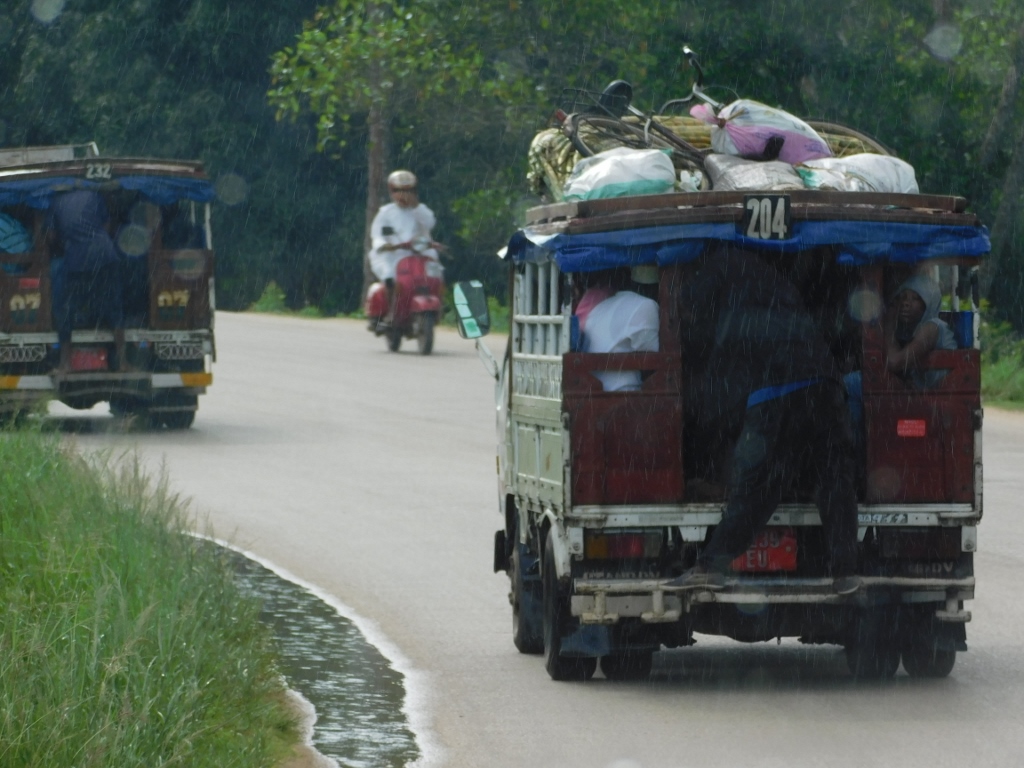 Dala dala on Zanzibar
Dala dala on Zanzibar
As quickly as it came, the rain also stopped and then the sun began to shine again.
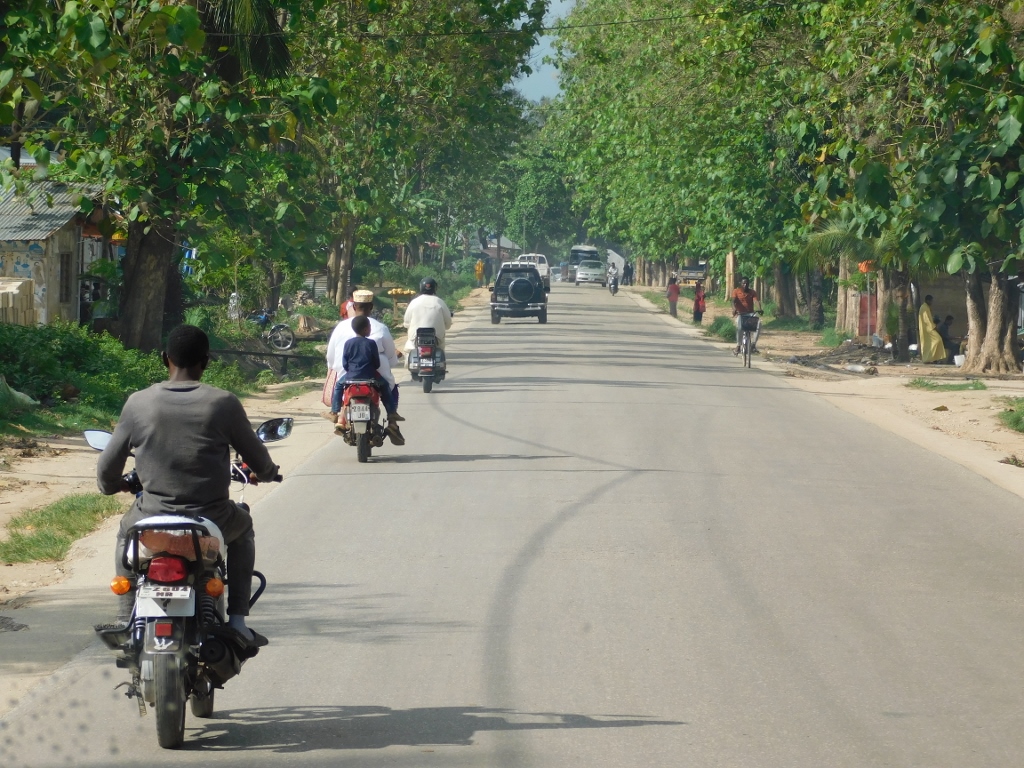 Interior of the island of Unguja
Interior of the island of Unguja
Now we went to the village of Kizimbani where we visited the spice farm of the same name. There are several spice farms in this area and they all pretty much cater to the visitor demand for spice farm tours. I also believe that the visit to each farm is more or less the same.
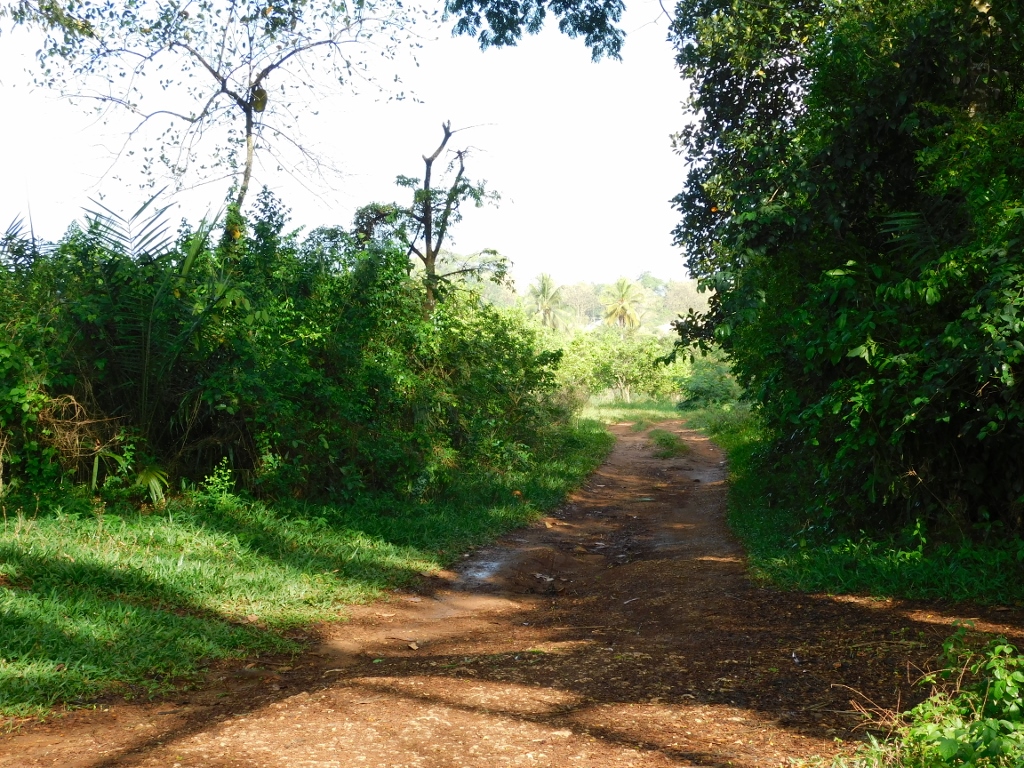 Kizimbani Spice Farm
Kizimbani Spice Farm
Not only plants that are used as spices are visited here, but also some types of trees the fruits of which are edible.
To begin with, we all had an opportunity to try freshly picked carambola.
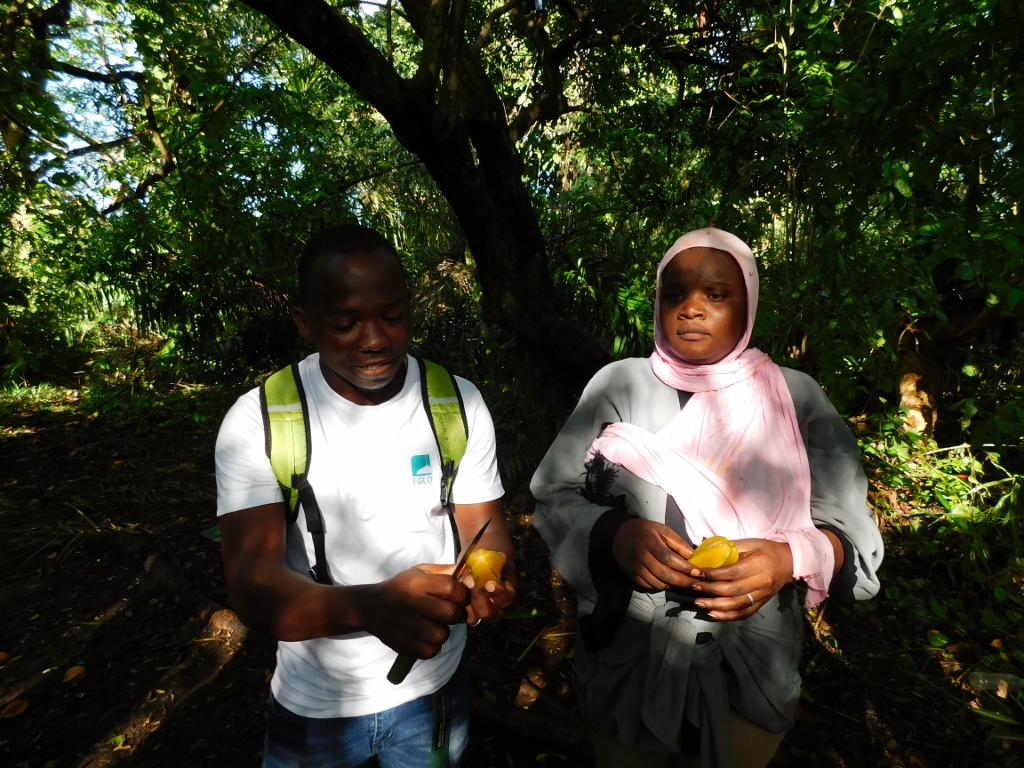 Local guides tell us about carambola and are cutting it so that we can try it
Local guides tell us about carambola and are cutting it so that we can try it
To begin with, the most interesting thing for me here were the feet of this young woman who was learning how to be a guide.
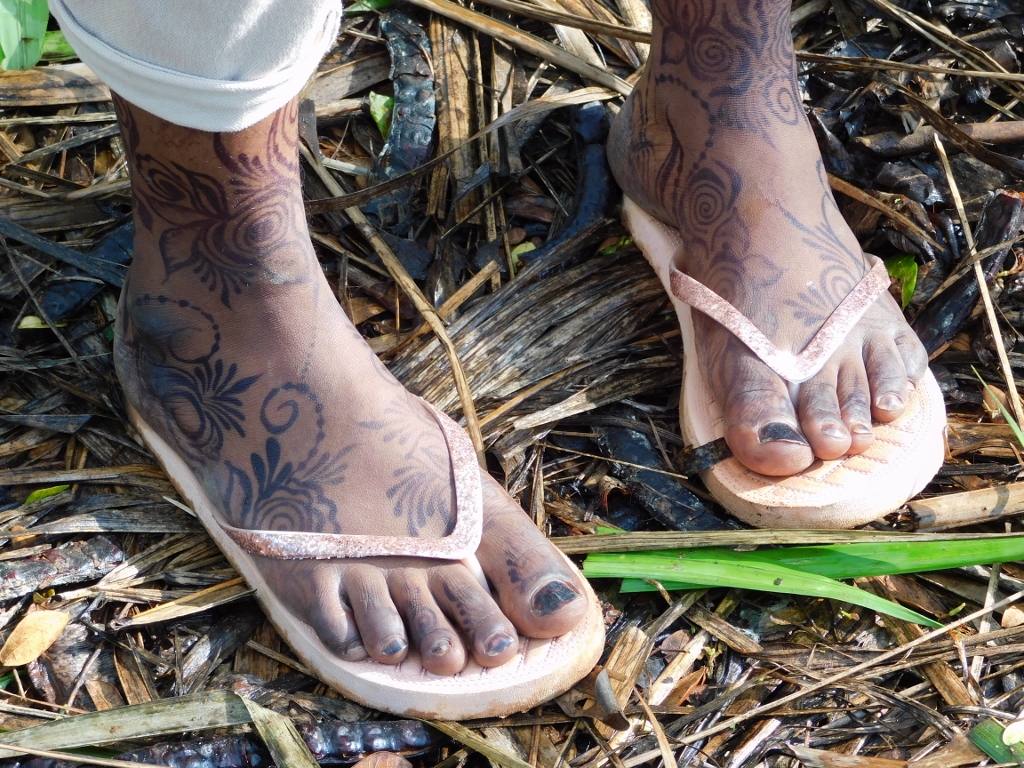 A side detail from the spice farm
A side detail from the spice farm
As for the trees and fruits, we first saw the carambola, but then also custard apple and jackfruit.
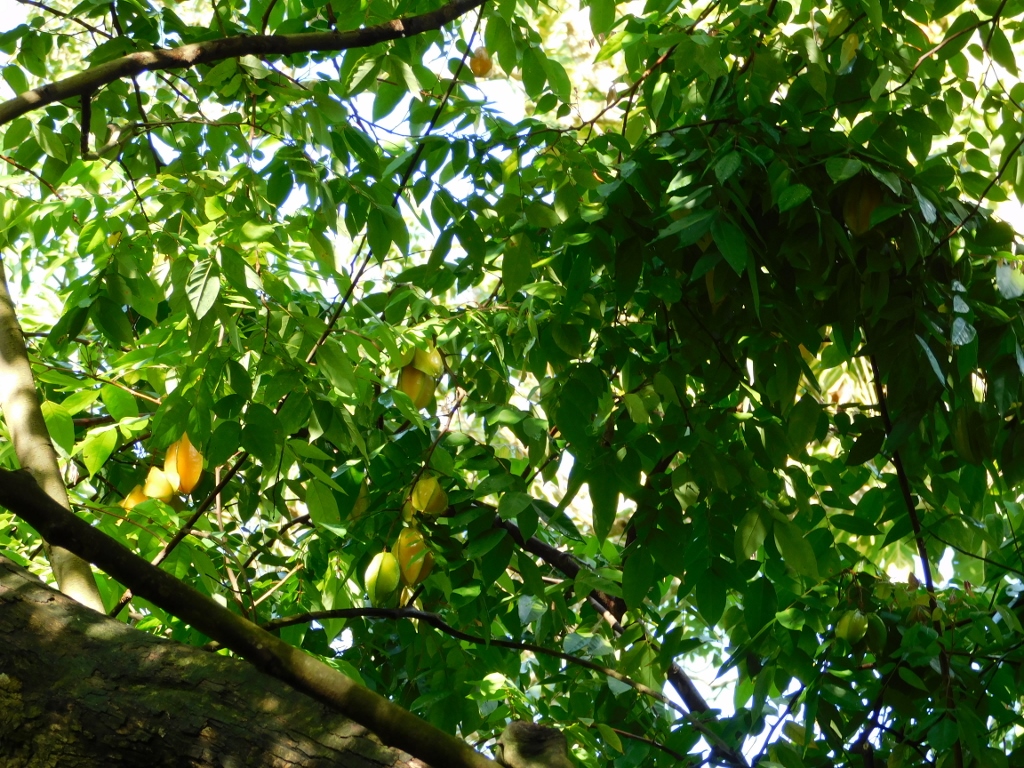 Carambola
Carambola
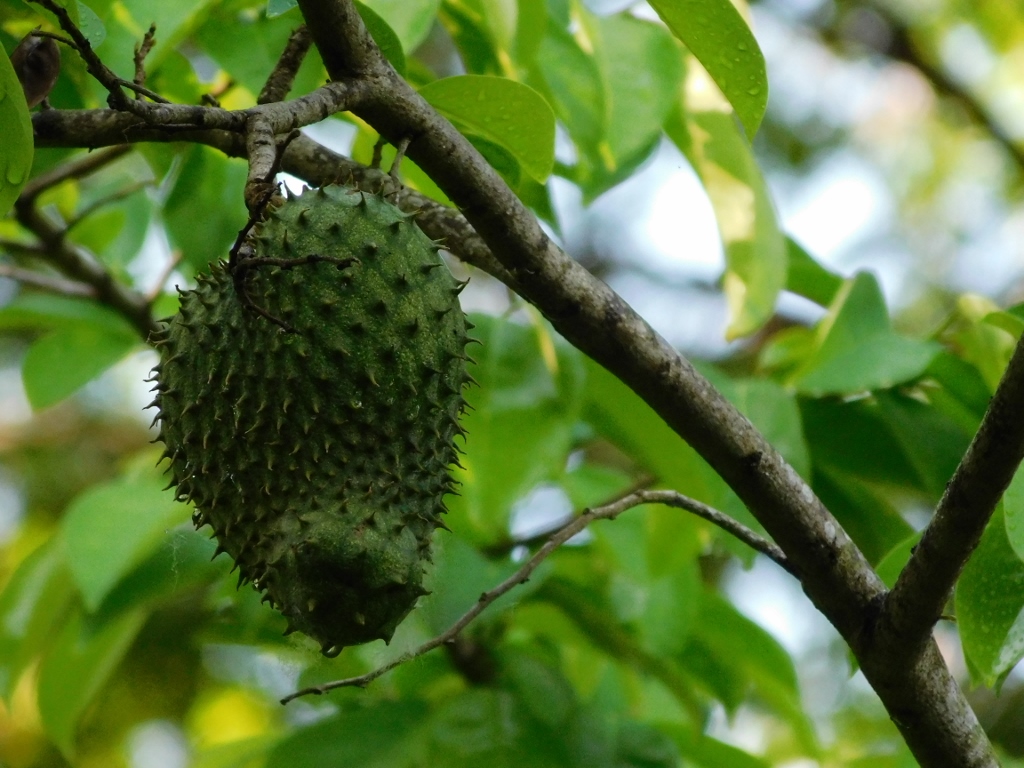 Custard apple
Custard apple
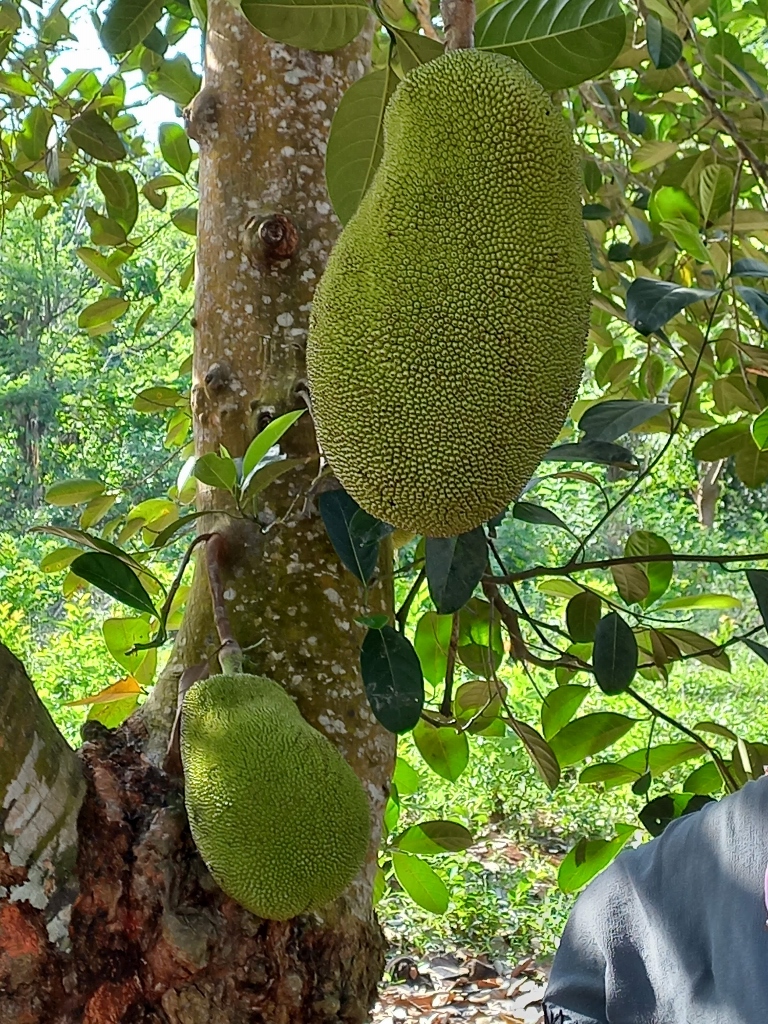 Jackfruit
Jackfruit
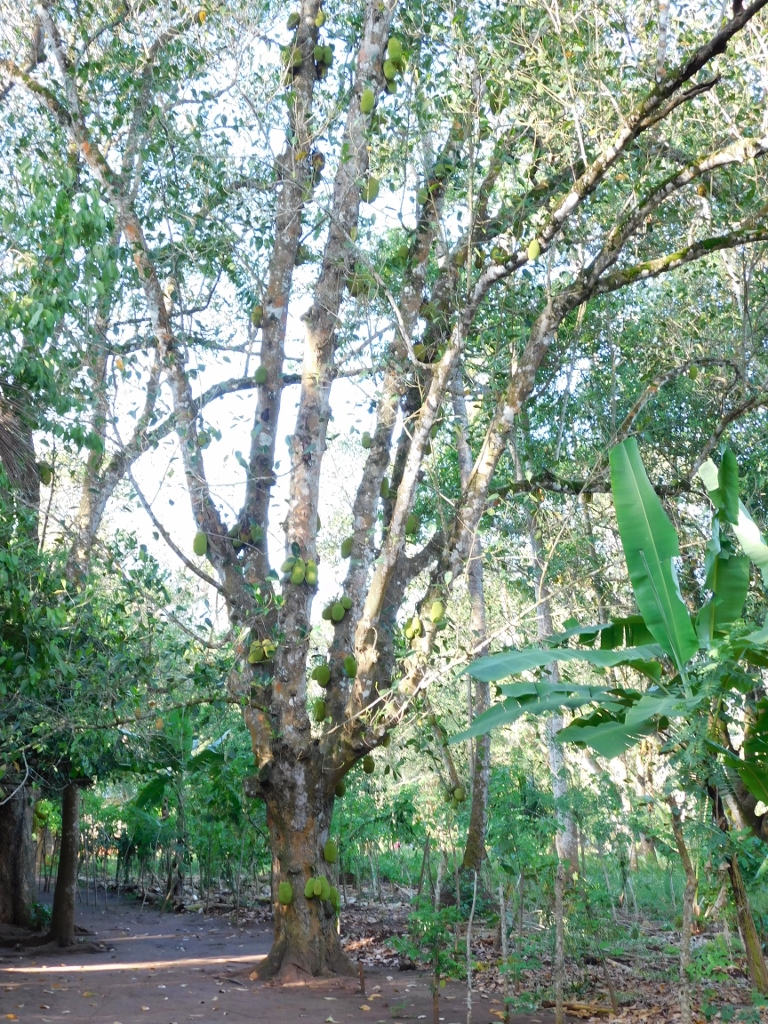 Jackfruit tree where numerous fruits can be seen
Jackfruit tree where numerous fruits can be seen
As for the inedible trees, the guides especially highlighted the ceiba or kapok tree (Ceiba pentandra). I remembered that this is a sacred Mayan tree from Central America, but, miraculously, on this occasion I refrained from speaking out, kept my mouth shut and did not pretend to be very clever. I don’t think my information would impress anyone anyway.
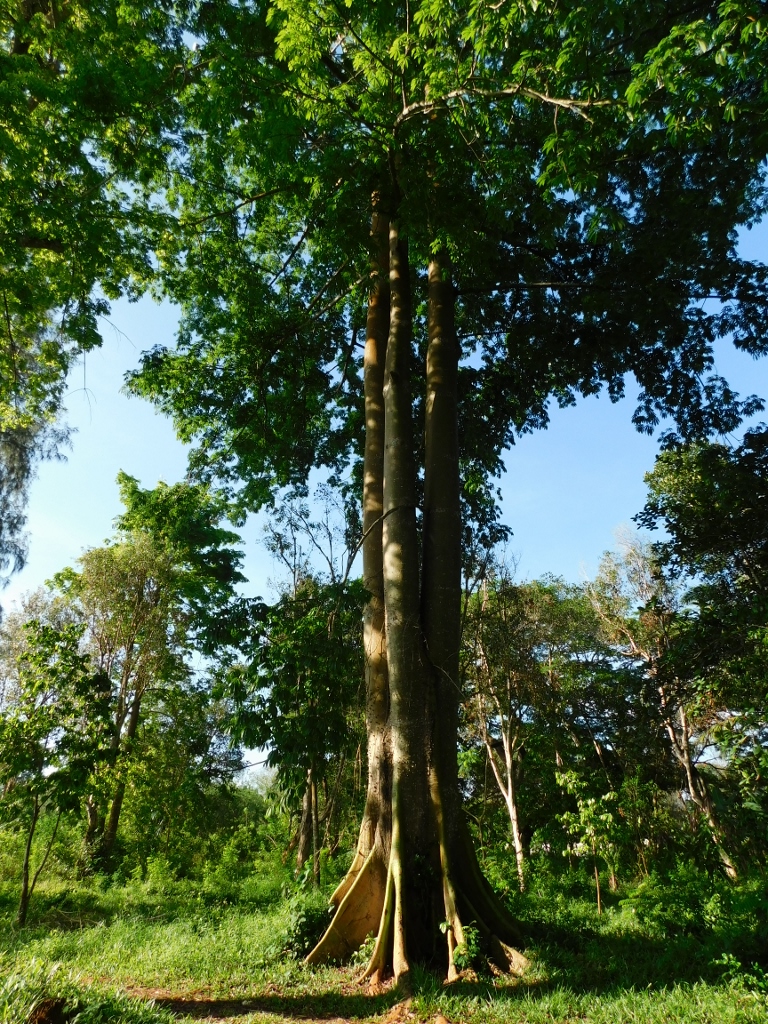 Ceiba or kapok tree
Ceiba or kapok tree
This tree is also called the silk-cotton tree and the reason for that is the fibre obtained from its pods with seeds. Here you can see how the fibres hang from the tree and they are eventually used to make mattresses and pillows, as well as for stuffed toys and the like.
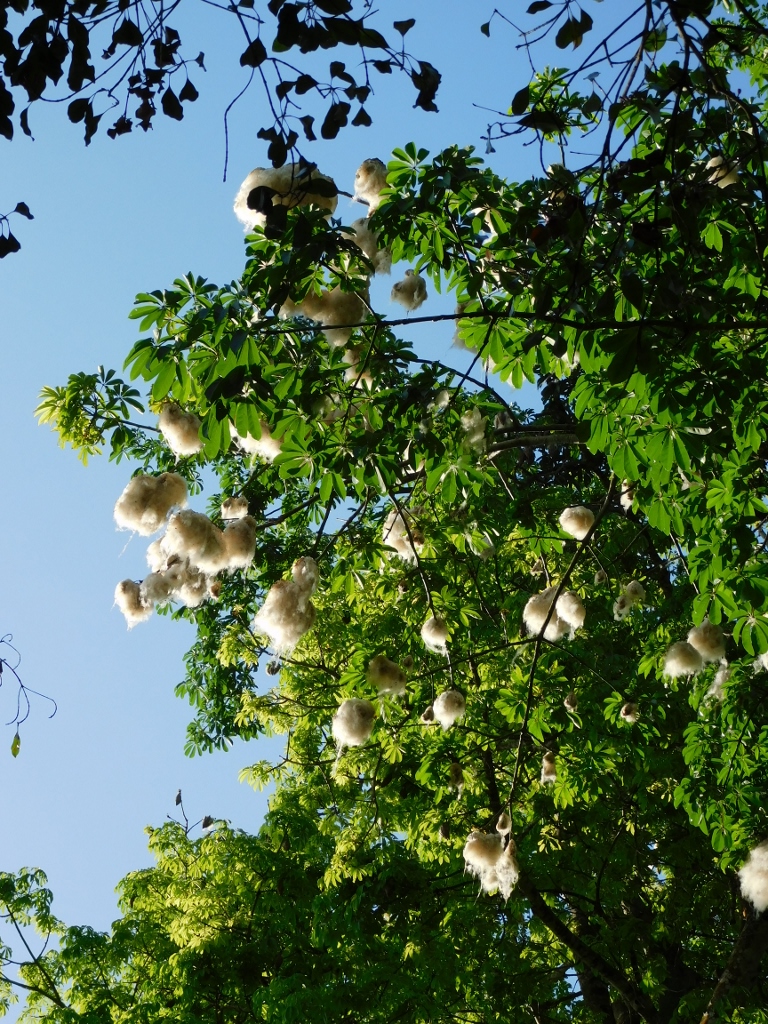 Ceiba or kapok tree
Ceiba or kapok tree
However, we did come here to see how different spices are grown, so we just moved on to another part of the farm.
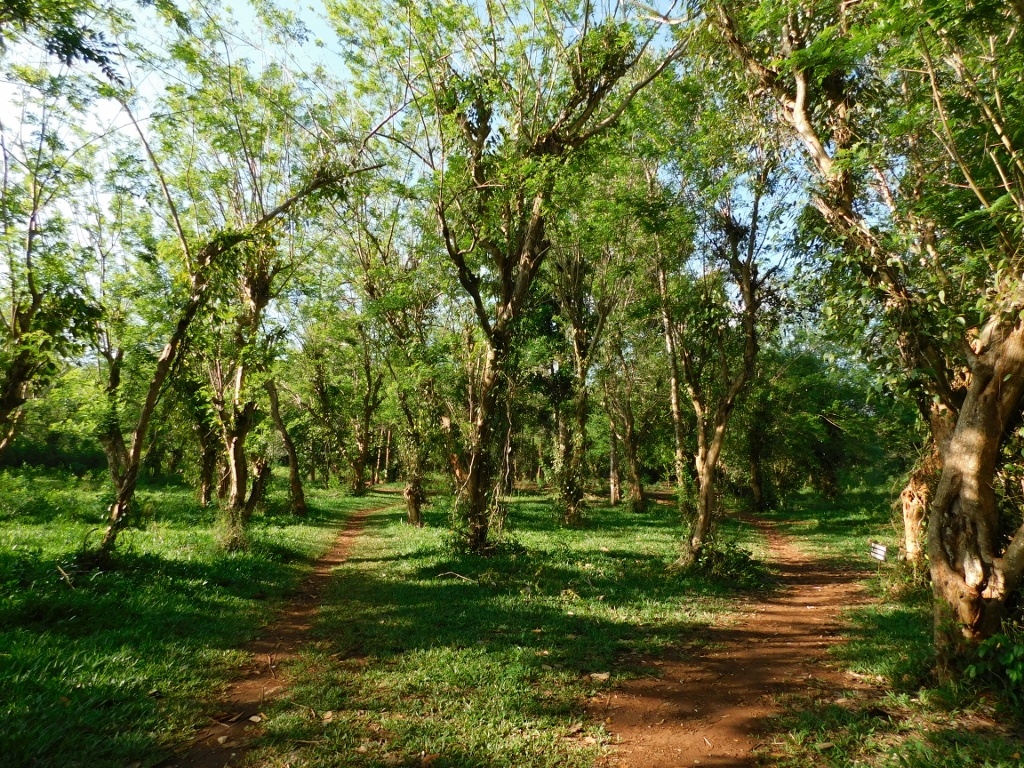 Kizimbani Spice Farm
Kizimbani Spice Farm
We saw different plants there – pepper, ginger, lemon grass, etc., but I was interested only in some of them, so here are a couple of photos.
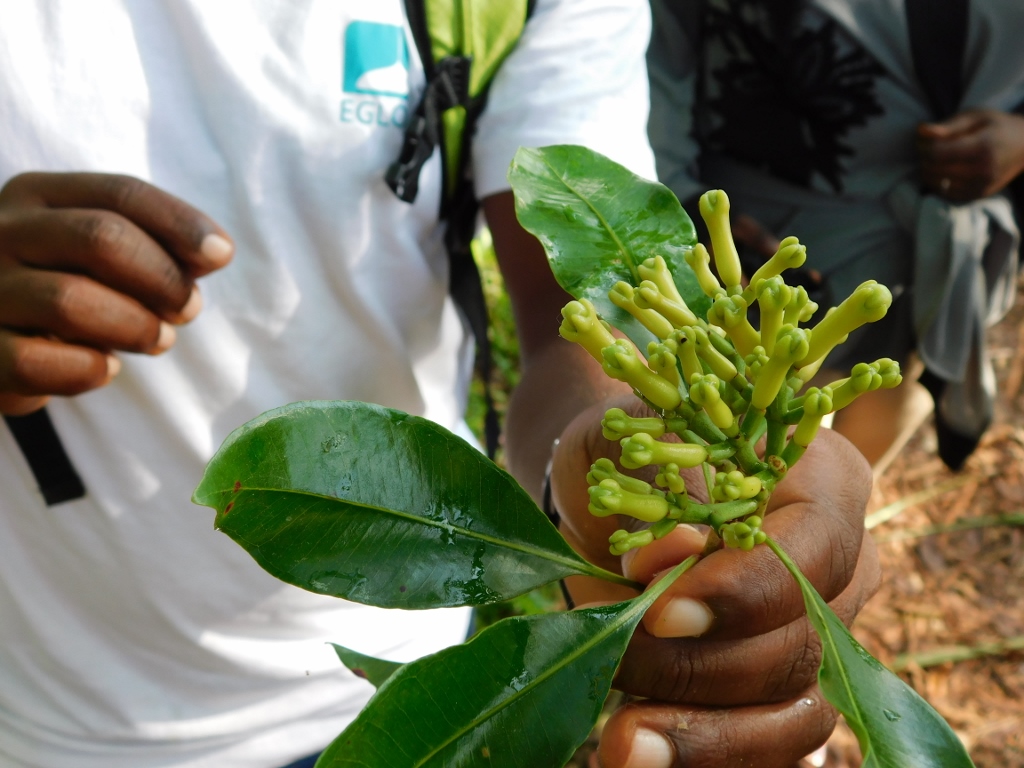 Still unripe cloves
Still unripe cloves
The nutmeg shown in the photo below is particularly interesting. What we normally use is the hard seed that is inside the hard brown membrane that can be seen wrapped in a red soft membrane. What is interesting is that the red soft membrane is also dried and later used as a kind of spice as well.
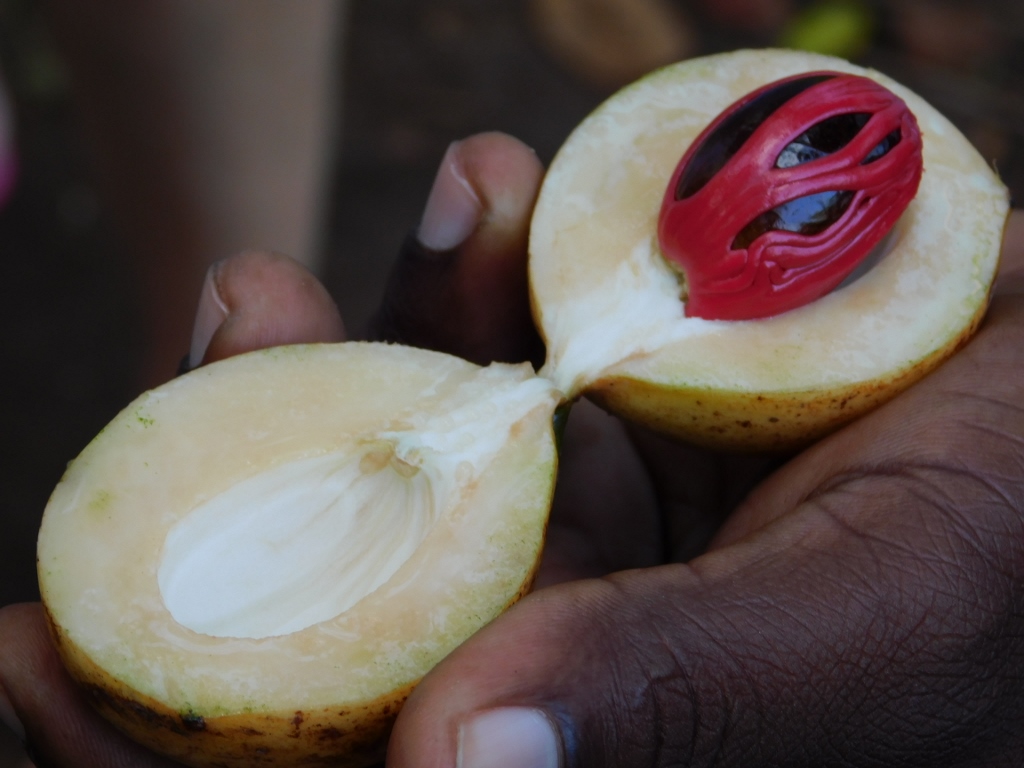 Nutmeg
Nutmeg
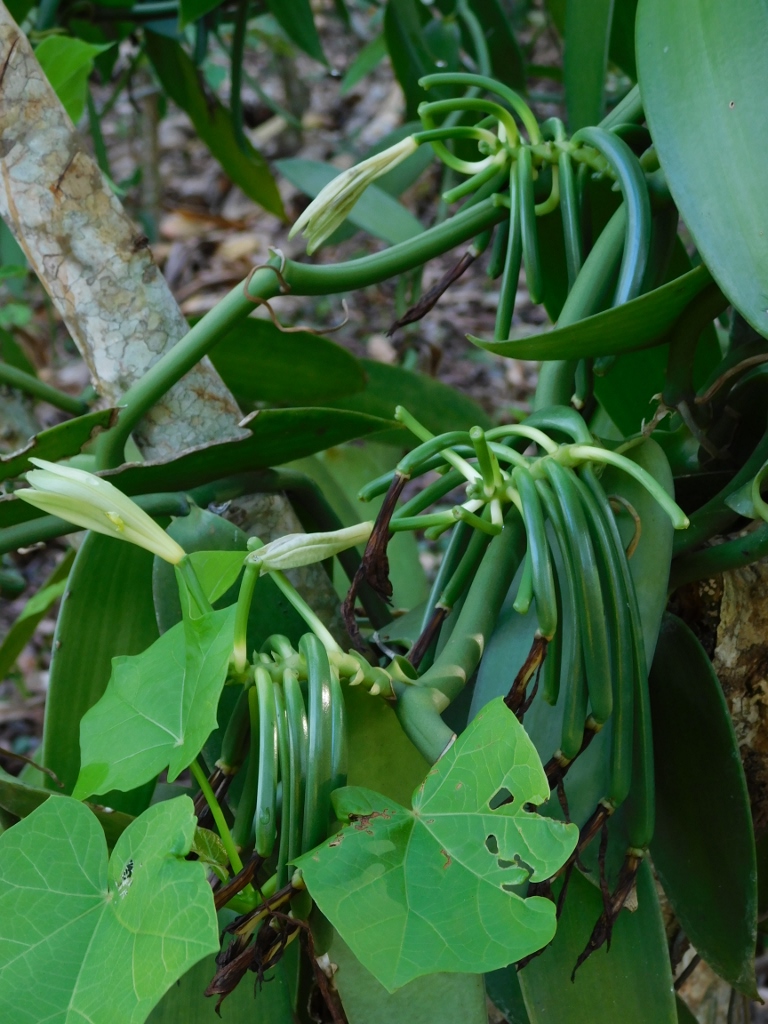 Still unripe vanilla pods
Still unripe vanilla pods
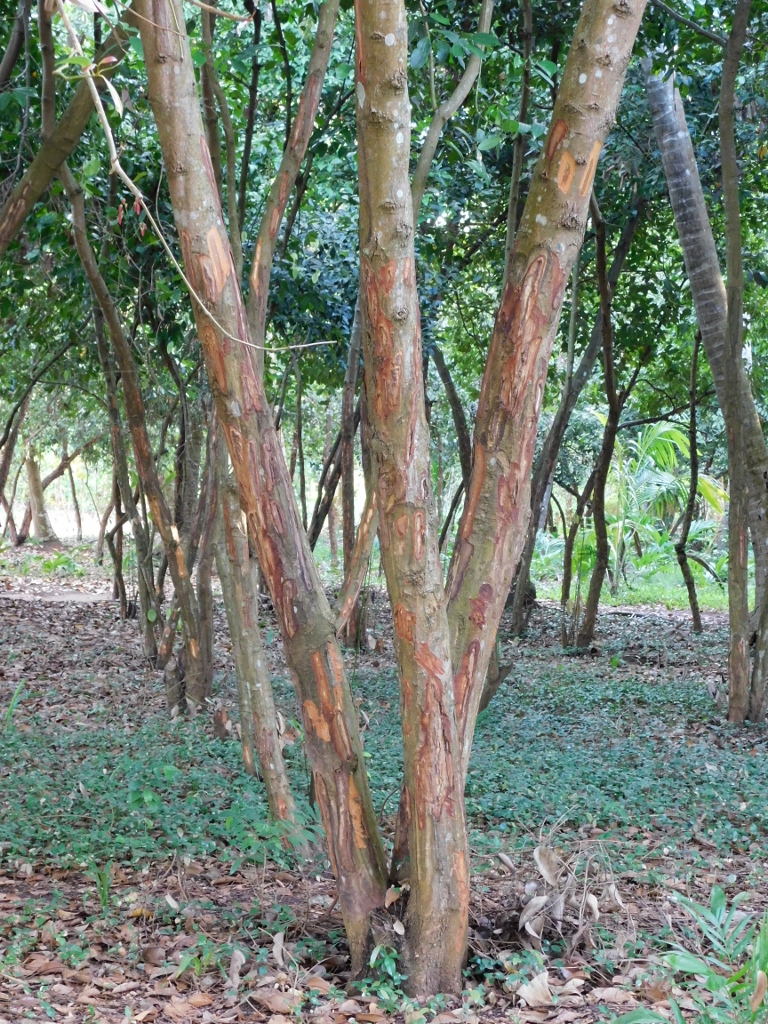 Cinnamon tree the bark of which is ground into the wonderful powder that we use as spice
Cinnamon tree the bark of which is ground into the wonderful powder that we use as spice
But, this is also the place where they grow the aloa vera and pineapples.
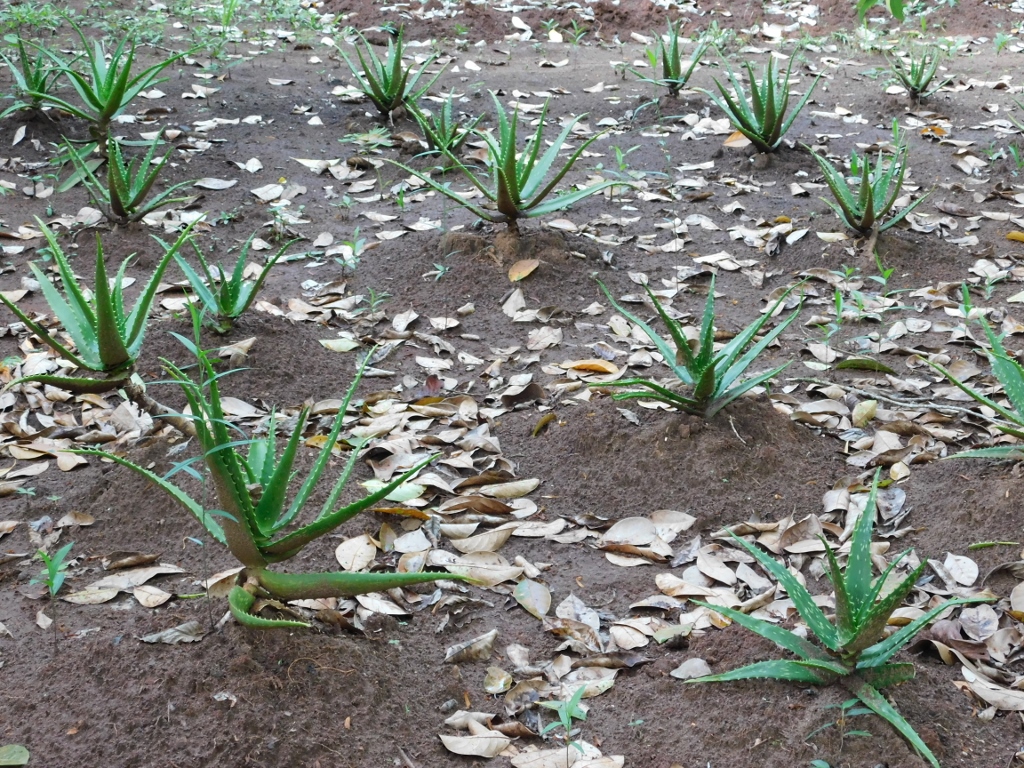 Aloa vera
Aloa vera
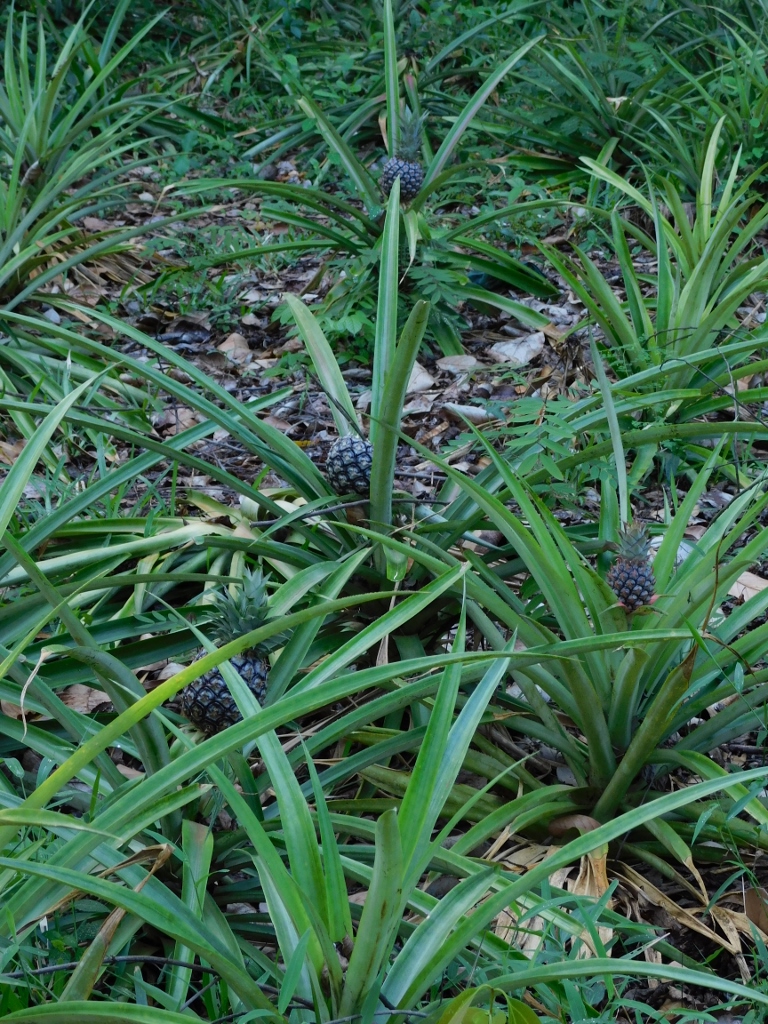 Pineapple
Pineapple
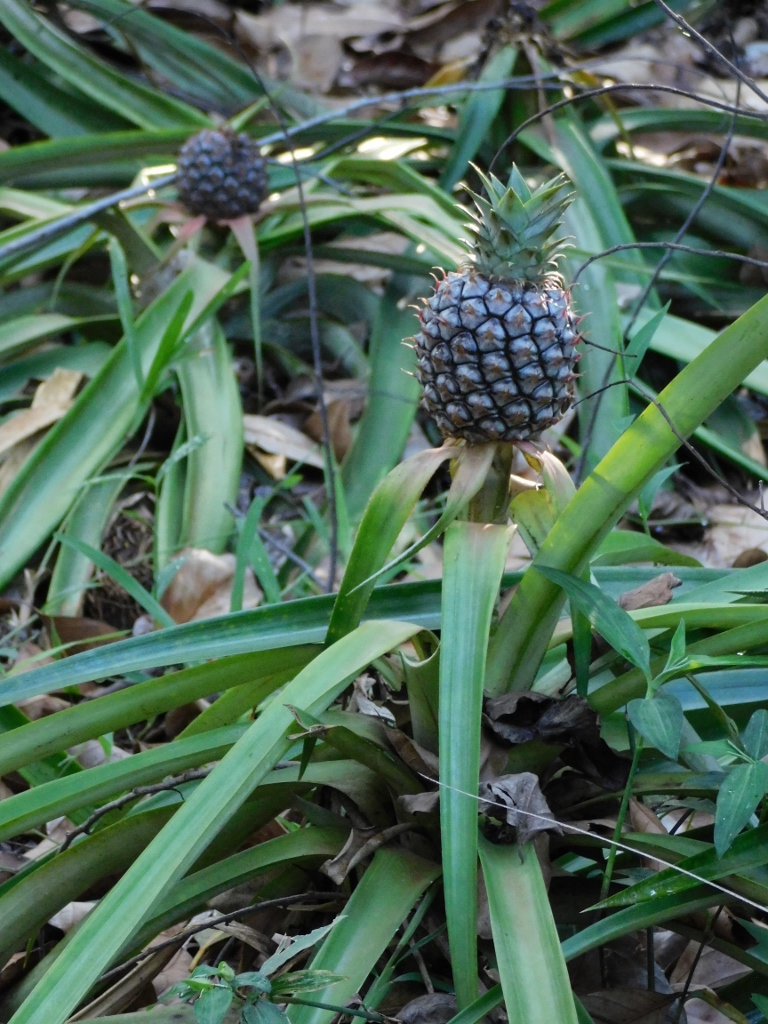 Pineapple
Pineapple
In addition to all these plants, I also spotted a couple of small animals on the farm. One was related to centipedes that actually have many more than a hundred legs, as their name would suggest; they actually have up to 750 legs. This one was Tanzanian Red Legged Millipede (Ephibolus pulchripes).
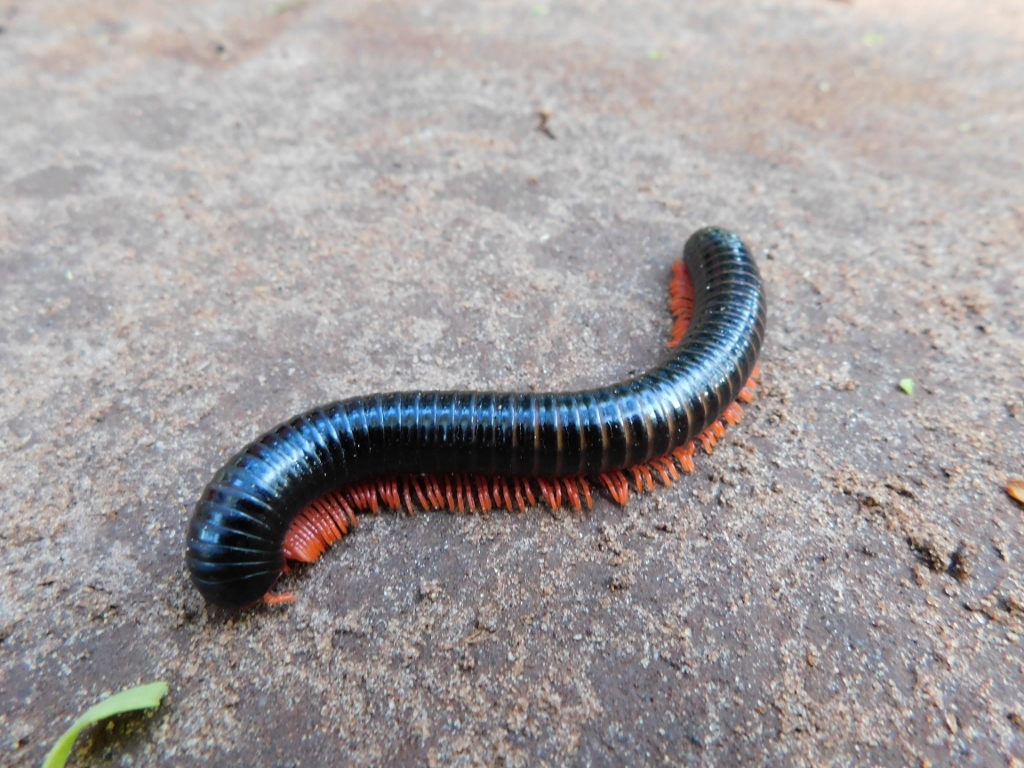 Tanzanian Red Legged Millipede
Tanzanian Red Legged Millipede
Another animal was a cute butterfly – common bush brown (Bicyclus safitza).
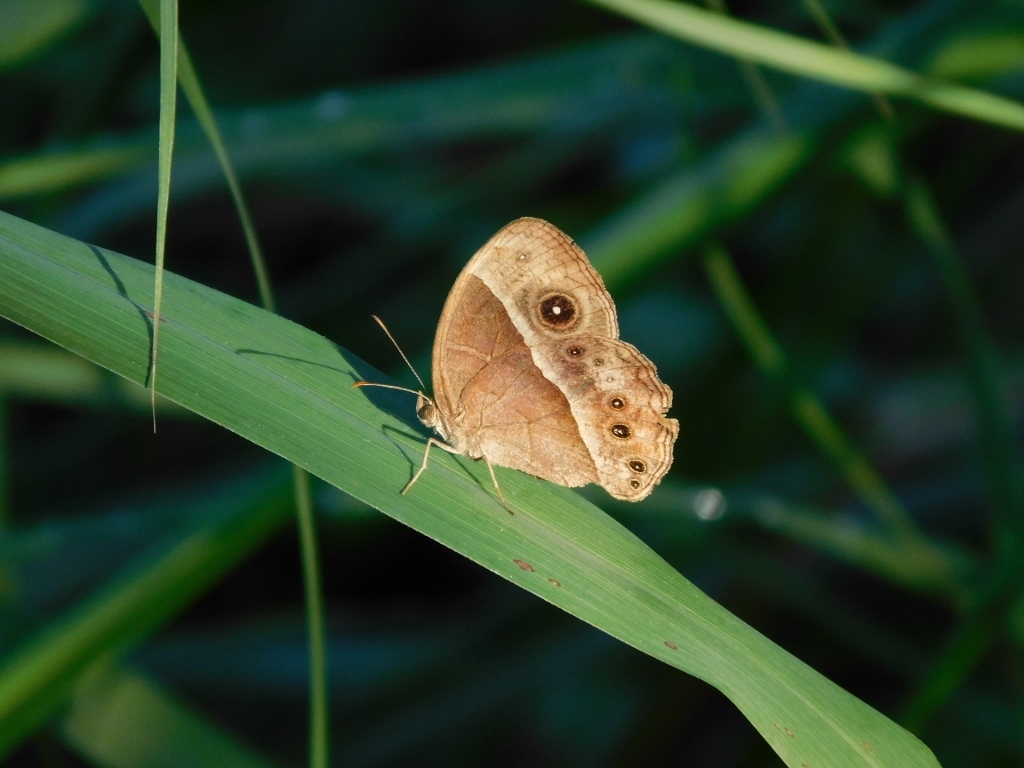 Common bush brown resting on a leaf
Common bush brown resting on a leaf
I also enjoyed, of course, watching along the way the sights from the village itself and the people who went on some business of theirs.
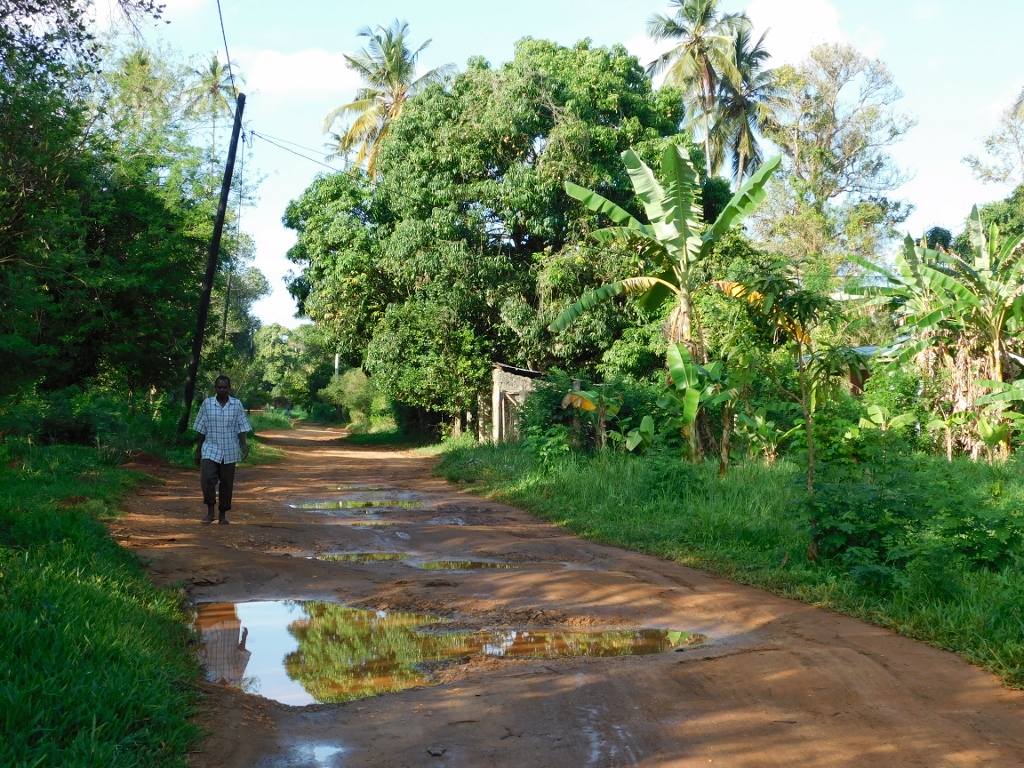 Kizimbani village and its residents
Kizimbani village and its residents
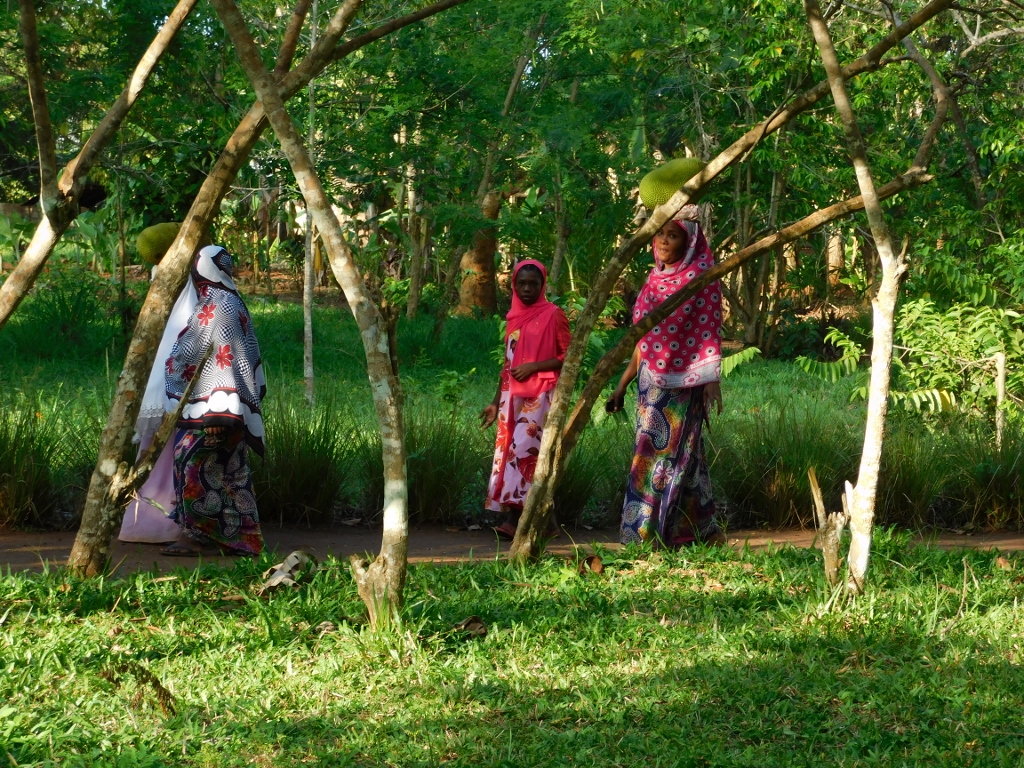 Kizimbani village and its residents
Kizimbani village and its residents
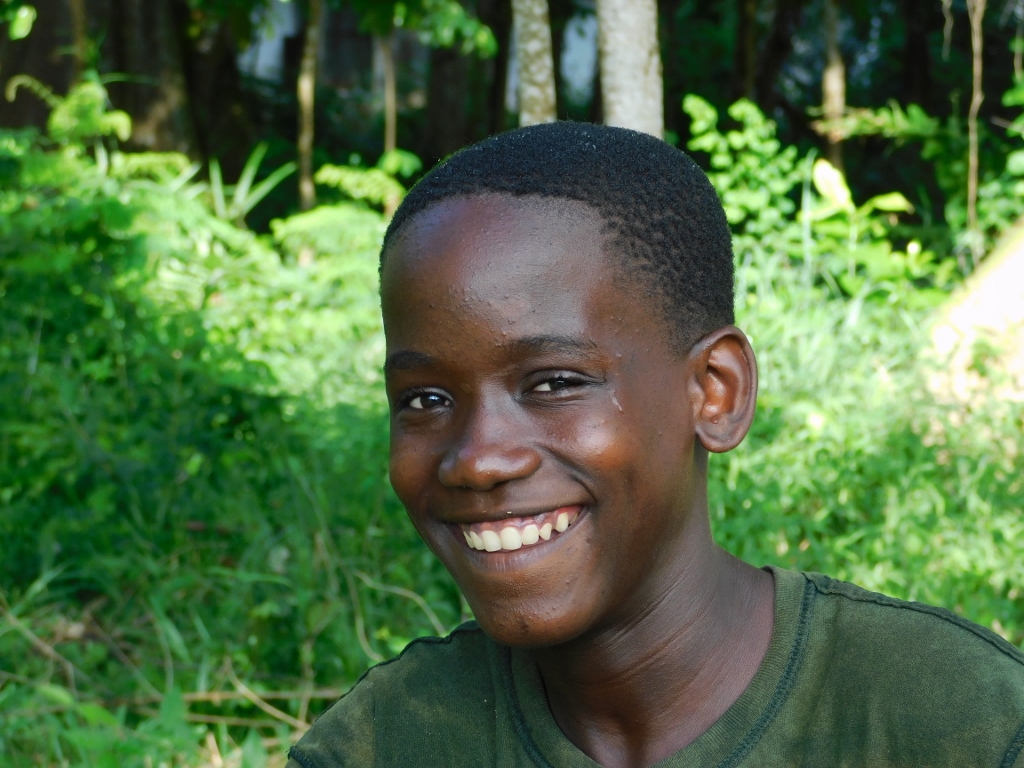 Kizimbani village and its residents
Kizimbani village and its residents
When we finished the tour around the spice farm, we went to a clearing with wooden benches around where some kind of local entertainment was organised for us. First, a man climbed a palm tree and then the dancing part of the show started, but I have to admit that something here did not suit me at all. I guess I didn’t like the fact that this was a subdued, but also highly improvised “performance” for tourists and I didn’t find it interesting or attractive at all, so I didn’t record anything there.
And then we went to a large wooden structure, like a wooden skeleton of a house, where you could see the pillars and a straw roof that had been installed. There we could buy different spices that were packed in small plastic bags and we also tried different fruits.
While we were waiting to board the mini-bus, I enjoyed the scenery of the village as the sun was slowly setting and the people went about their business.
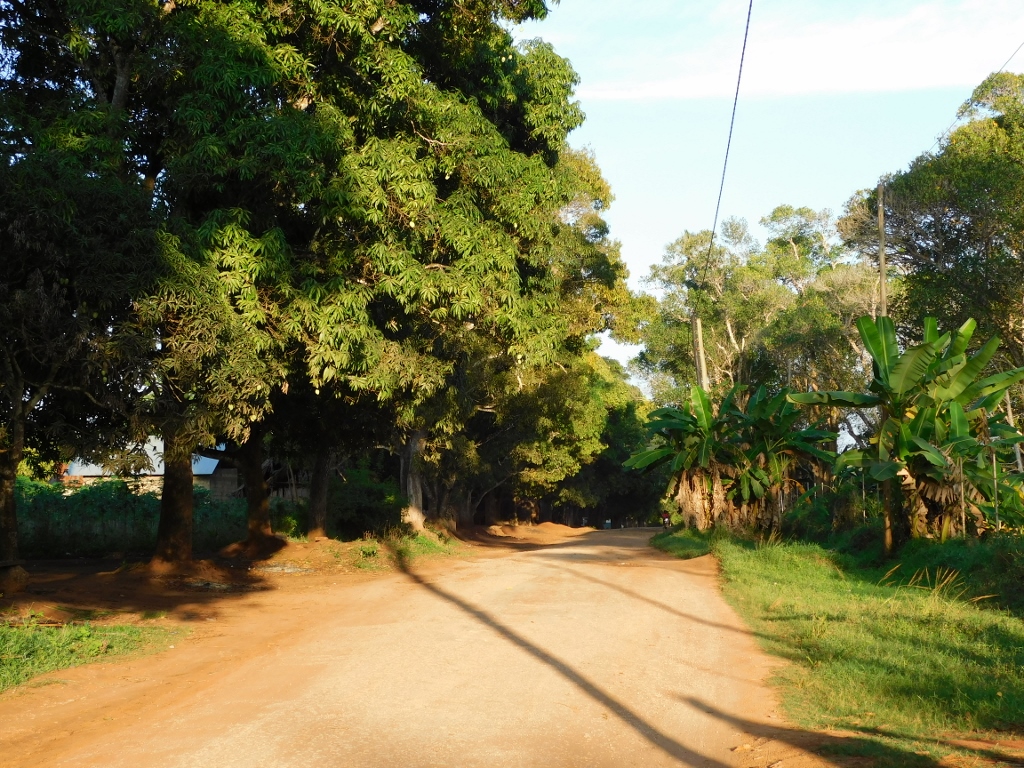 Kizimbani village late in the afternoon
Kizimbani village late in the afternoon
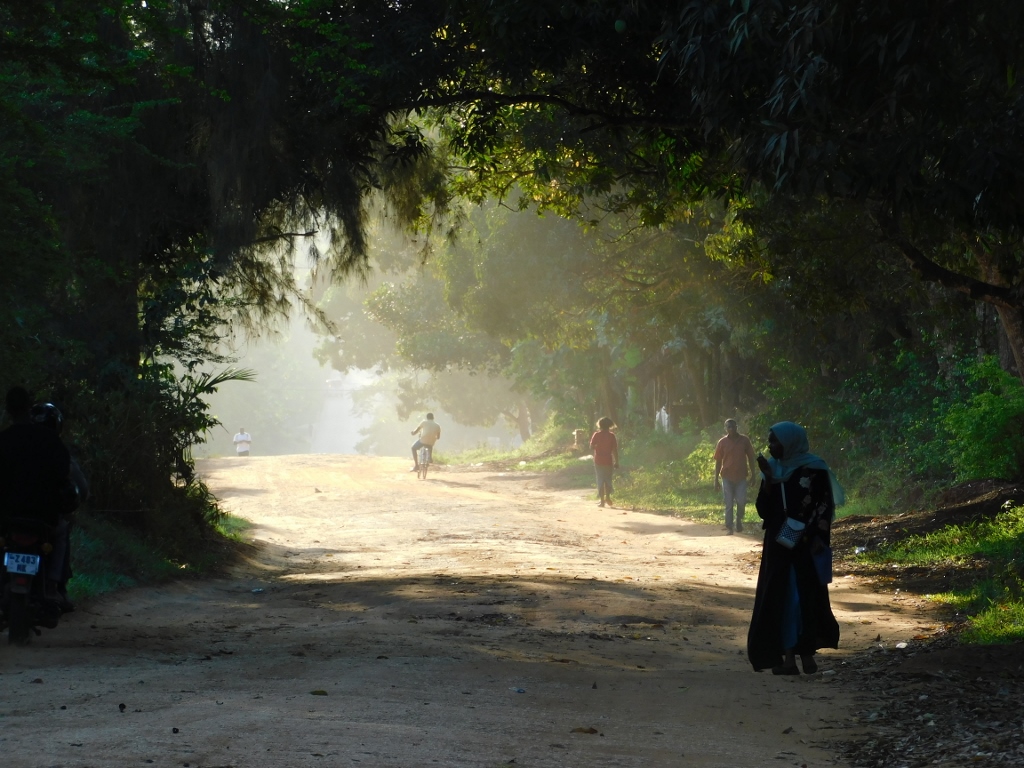 Kizimbani village late in the afternoon
Kizimbani village late in the afternoon
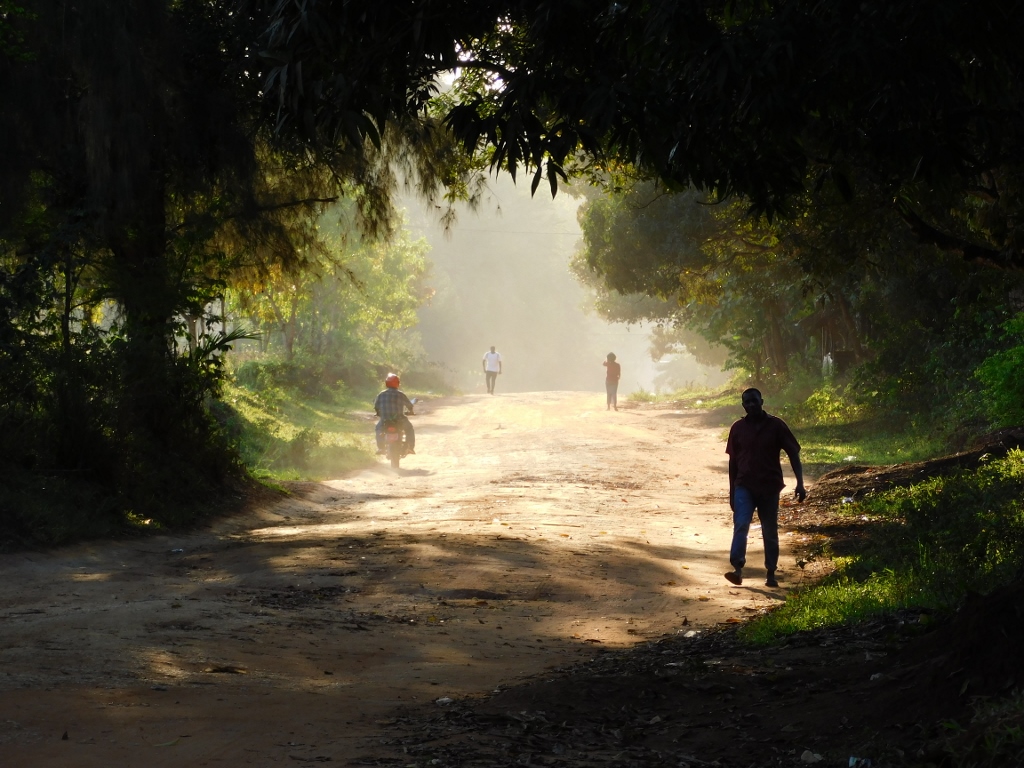 Kizimbani village late in the afternoon
Kizimbani village late in the afternoon
In the evening, Lela and I went for dinner in Stone Town and it wasn’t bad at all, but the cold local beer was the best. It was a good way to mark the end of a wonderful day.
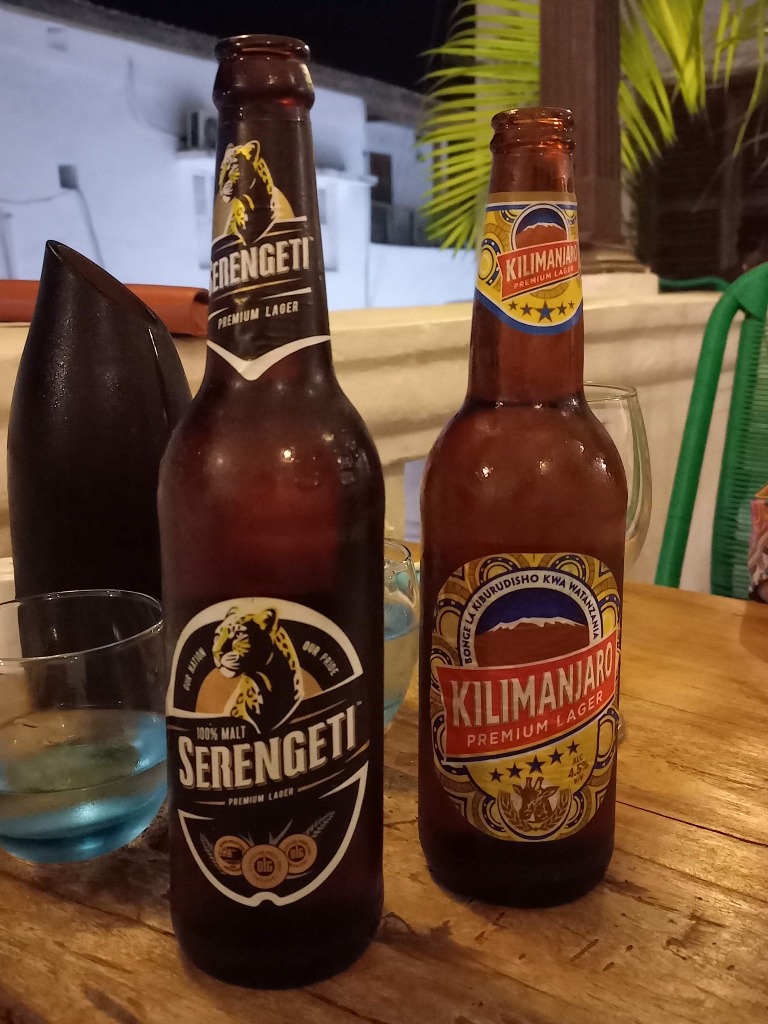 Beer with the dinner on Zanzibar
Beer with the dinner on Zanzibar